Special Tools
| • | DT-48723 Pinion Head Bearing Cup Installer |
| • | DT-48725 Pinion Tail Bearing Cup Installer |
| • | DT-48722 Left Axle Seal Installer |
| • | DT-48721 Right Axle Seal Installer |
| • | DT-48727 Pinion Seal Installer |
| • | DT-48728 Differential Bearing Installer |
| • | DT-48806 Pinion Bearing Measurement Spacer |
| • | DT-48807 Pinion Head Bearing Installer |
- Measure the thickness of DT-48806 (1) using a depth gage (2). (e.g - 3.67 mm).
- Record the thickness of the DT-48806 (1).
- Measure the thickness of the DT-48806 (1) and the pinion head bearing (2) with the depth gage (3) (e.g - 33.925 mm).
- Record the thickness of the DT-48806 (1) and pinion head bearing (2).
- Subtract the thickness of DT-48806 (1) 3.67 mm from the total thickness of the pinion bearing measurement spacer (1) and the pinion bearing (2) 33.925 mm to determine the pinion head bearing (2) thickness.
- Example - The pinion head bearing (2) thickness is 33.925 mm - 3.67 mm = 30.255 mm
- Record the serial number (1), set number (3) and size (4) which are stamped into the pinion gear (2).
- Example:
- Check that the serial number (1) and set number (3) which are stamped into the ring gear (2) match those of the pinion set in step 7.
- Example:
- Identify the differential housing.
- Record the differential housing size. Example - 138.180 mm
- Determine the thickness of the pinion shim.
- Position the correct shim onto the pinion head.
- Position the NEW pinion head bearing (2) onto the pinion gear (1).
- Press the NEW pinion head bearing (2) onto the pinion gear using DT-48807 (3).
- Clean the ring gear and the contact area of the differential.
- Position the NEW head bearing cup (1) into the differential housing (2).
- Press the NEW head bearing cup in with DT-48723 (1) and rotate until it fits tightly in the front differential housing (2).
- Use a feeler gage to make sure the NEW head bearing cup is seated correctly.
- Position the NEW tail bearing cup (2) to the differential housing (3).
- Press the NEW tail bearing cup in with DT-48725 (1) and rotate until it fits tightly in the front differential housing (2).
- Use a feeler gage to make sure the NEW tail bearing cup is seated correctly.
- Position the ring gear (1) to the differential (2).
- Install two NEW ring gear to differential retaining bolts.
- Install the remaining NEW ring gear to differential retaining bolts (1) and tighten to 125 N·m (96 lb ft).
- Press the right differential bearing (1) to the differential (3) with DT-48728 (2).
- Rotate and press the left bearing to the differential with DT-48728 (2).
- Position the differential (1) to the differential housing (2).
- Position the left shim (3) and right shim (1) to the original position in the differential housing (2).
- Position the differential housing cover to the differential housing and retain with the 4 bearing bolts (1).
- Turn the differential assembly left through 90 degrees for the differential to slide down in the housing.
- Install the circlip (1) to the differential (3) with circlip pliers (2).
- Make sure the circlip (1) is fitted correctly.
- Install the remaining differential housing cover to differential housing retaining bolts (1). Tighten the housing bolts to 53 N·m (39 lb ft) and the bearing bolts to 153 N·m (112 lb ft).
- Position the backlash tool (1, 4) to the differential assembly (3).
- Secure the backlash tool (1) to the differential assembly (3) by adjusting the spreading nut (4).
- Mount the turning torque gage (2) to the backlash tool (1).
- Rotate the turning torque gage (2) clockwise and record reading.
- Turning torque should be between 2.0-3.3 N·m (27 lb in).
- If the measured turning torque is outside the tolerance:
- Remove differential assembly. Repeat steps 5-11 from the disassembly procedure.
- Position the pinion (4) on DT-48728 (3) in a suitable press (2).
- Position the differential housing (1) over the pinion gear (4).
- Position a NEW collapsible spacer (1) to the differential (2).
- Position the pinion tail bearing (1) to the differential housing (2).
- Use a suitable press (2) and DT-48723 (1) to press the tail bearing until it rests against the collapsible spacer.
- Remove the supporting tool so that the differential housing rests on the table.
- Lubricate the NEW pinion flange seal (1) with correct grease. Refer to Adhesives, Fluids, Lubricants, and Sealers.
- Install the pinion flange seal (1) to the differential housing (4) with DT-48727 (2) in a suitable press (3).
- Mount the differential housing (4) on a suitable holding device.
- Position the pinion flange (2) to the differential (3).
- Lubricate the contact surface of the prevailing torque pinion flange retaining nut (1) with correct grease. Refer to Adhesives, Fluids, Lubricants, and Sealers.
- Apply correct LOCTITE to the thread of the NEW prevailing torque pinion flange retaining nut (1).
- Install the NEW prevailing torque pinion flange retaining nut (1) to the differential (3).
- Install the universal pulley holder (3) to the pinion flange (1).
- Tighten the prevailing torque pinion flange retaining nut (2) carefully until it has no play.
- Remove the universal pulley holder from the pinion flange (1).
- Turn the differential assembly through 90 degrees.
- Position the turning torque gage (1) to the prevailing torque pinion flange nut.
- Turn the turning torque gage (1) in a clockwise direction and record reading.
- Turning torque should be between 2.2-2.7 N·m (20-25 lb in).
- If the turning torque is below specified tolerance, tighten the prevailing torque pinion flange retaining nut in small steps and check turning torque until specified turning torque is reached.
- If the turning torque is above specified tolerance disassemble, fit new collapsible spacer and repeat until correct specification is achieved.
- Position a dial gage (2) to measure the concentric running on centering while turning the pinion (1).
- If the measured value is above 0.1 mm remove the pinion flange and re-install at a different angle. Repeat steps 52-66 in the assembly procedure. Make sure the turning torque is 0.1-0.2 N·m higher than recorded in step 63 but not higher than 2.7 N·m.
- Position the backlash tool (2) to the differential assembly.
- Position the dial gage (1) to the backlash tool (2).
- Use a suitable tool to move the backlash tool (2) within the backlash and record the reading.
- Backlash must be between 0.07-0.18 mm.
- If the backlash is not between the specified tolerance, it must be adjusted with differential shims otherwise turning torque set during steps 38-43 will be changed.
- If a 0.05 mm thinner shim is used on the right a 0.05 mm thicker shim has to be added to the left.
- Remove the rear differential housing. Refer to steps 5 and 6 in the disassembly procedure.
- Clean the mating faces of the differential housings (2).
- Apply a 1 mm liquid seal bead (LOCTITE 5910) (1) to the mating face of the differential housing. Refer to Adhesives, Fluids, Lubricants, and Sealers.
- Install the differential housing cover to the differential housing. Refer to steps 26-33.
- Install the left and right rear axle shaft seals (1) using DT-48722 and DT-48721 (2).
- Install 2 rear axle flanges or 2 sealing plugs (1) to seal the differential (3).
- Remove the oil drain plug and install the air pressure regulator (2).
- Connect the air supply to the regulator (2) and pressurize the differential (3) to 0.4 bar.
- Disconnect the air supply from the regulator (2).
- The pressure should not decrease from 0.4 bar within 3 minutes. If the pressure decreases, locate and repair leakage.
- Install the differential (3) to the vehicle. Refer to Differential Replacement.
- Fill the differential fluid. Refer to the filling procedure in Differential Oil Replacement.
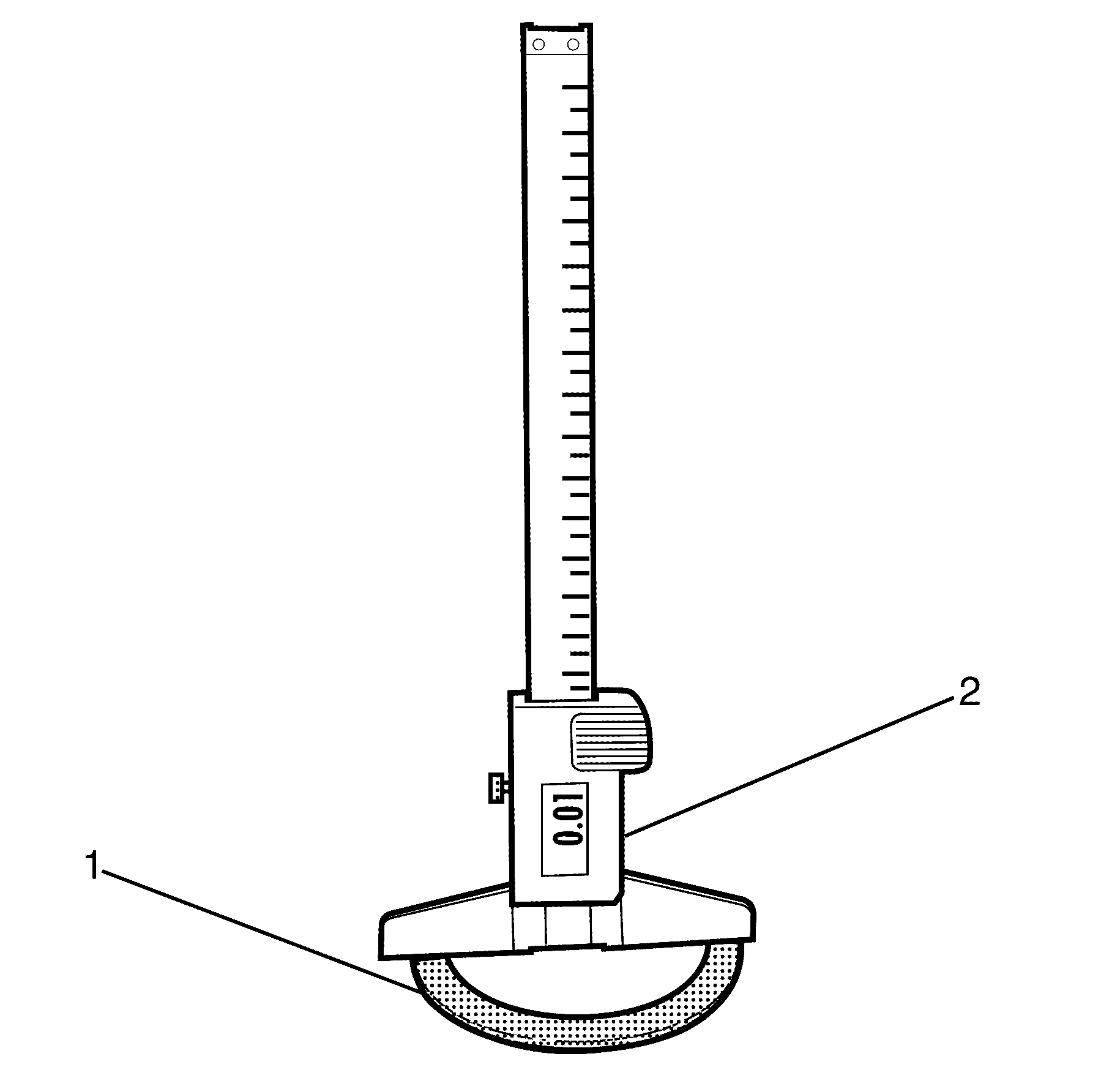
Note: Use DT-48806 otherwise bearing height cannot be measured correctly.
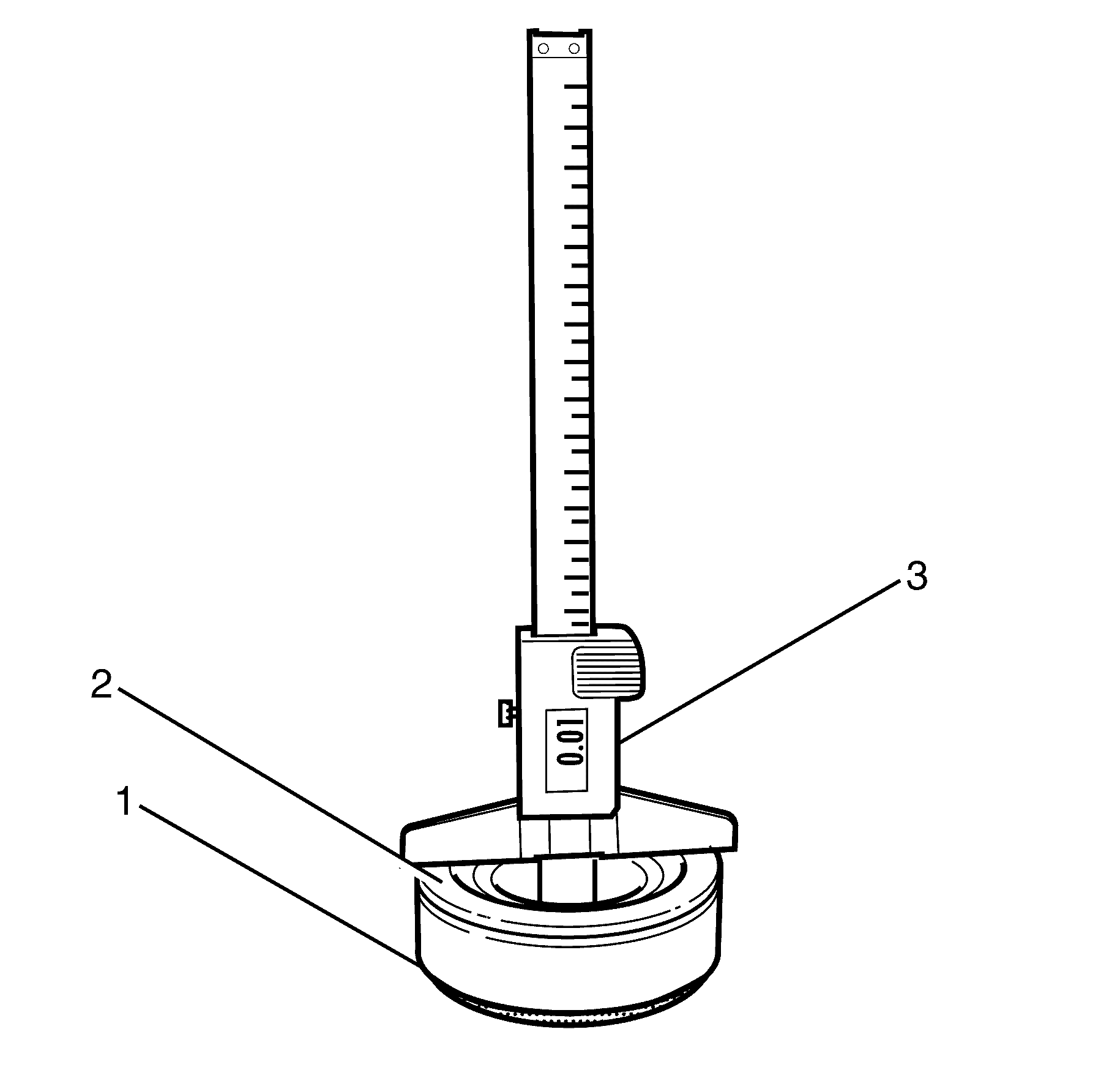
Note: Rotate the pinion head bearing (2) to settle for correct measurement.
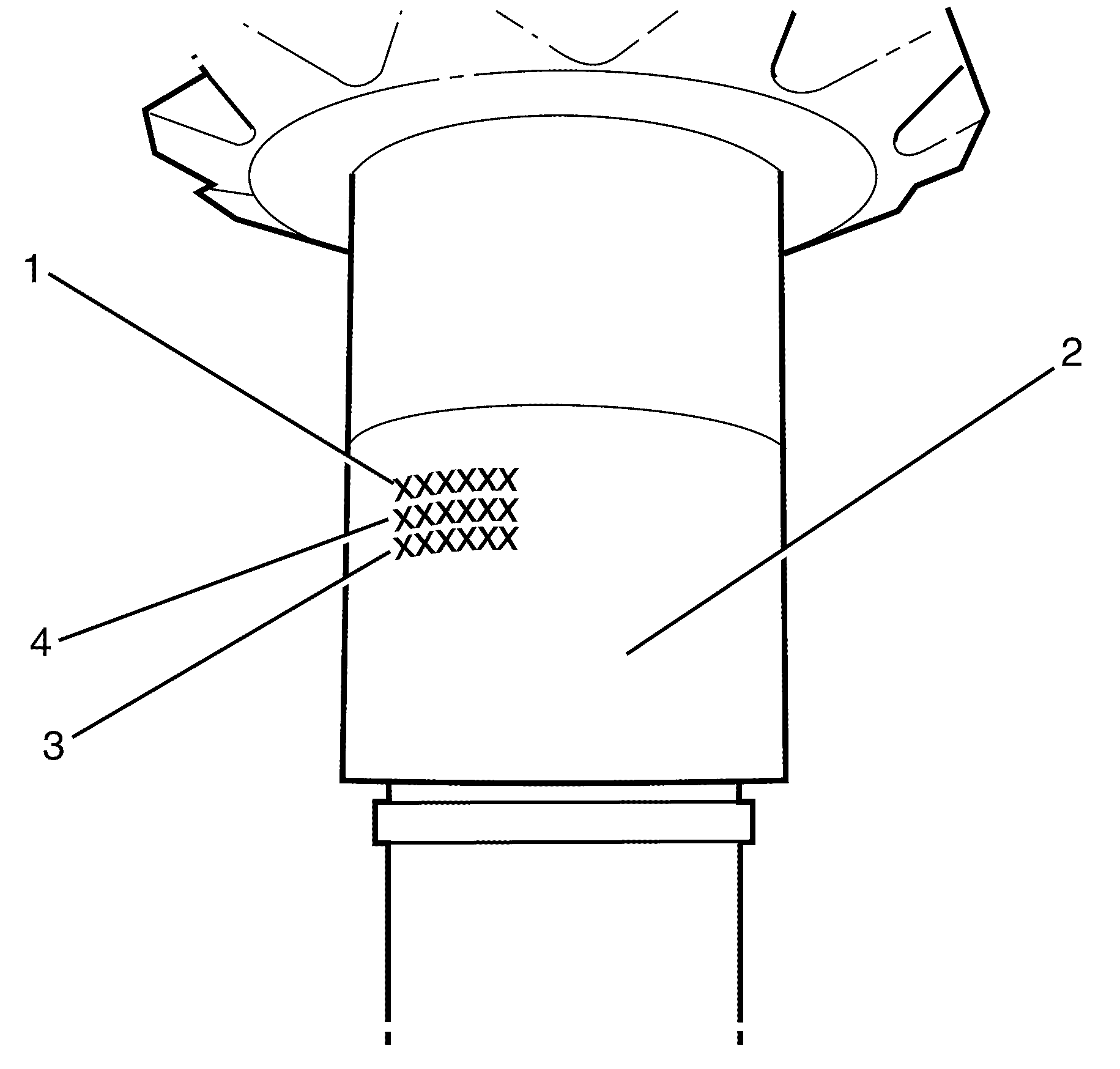
| • | Serial Number A0200008 (1) |
| • | Pinion Size 106.475 mm (4) |
| • | Set Number 260125 (3) |
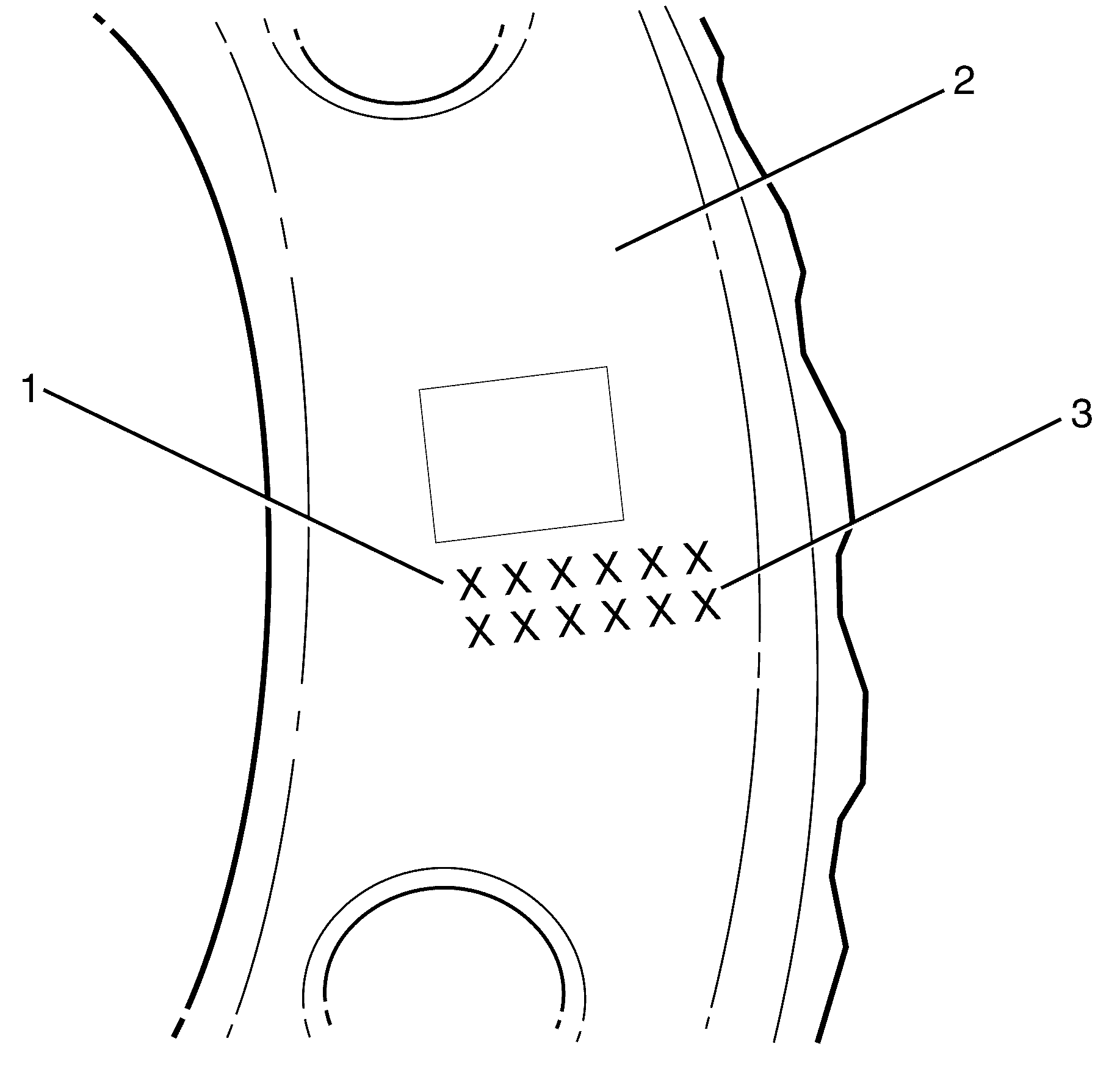
| • | Serial Number A0200008 (1) |
| • | Set Number 260125 (3) |
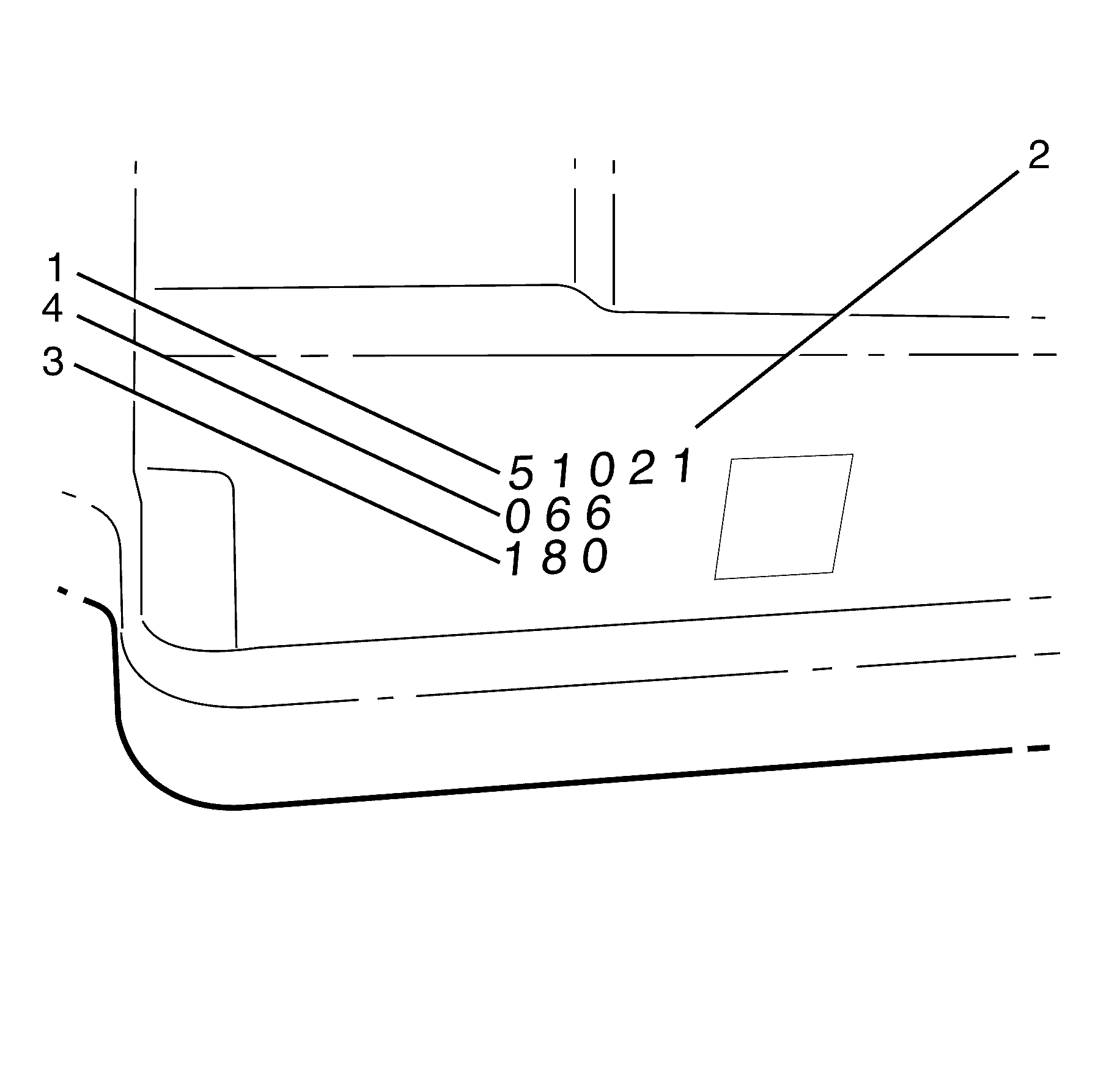
Note: The identification number (1, 3, and 4) is stamped into the differential housing (2).
| • | Manufacturing date (1) |
| • | Item number (4) |
| • | Size equals 138 plus the number on the housing. Example - 138.180 mm (3). |
| • | Add the pinion plus the bearing Example - 106.475 mm + 30.255 mm = 136.730 mm. |
| • | Subtract the pinion plus the head bearing from the housing size, also subtract the correction factor. The correction factor is 0.05 mm. Example 138.180 - 136.730 - 0.05 = 1.40 mm thickness shim required. |
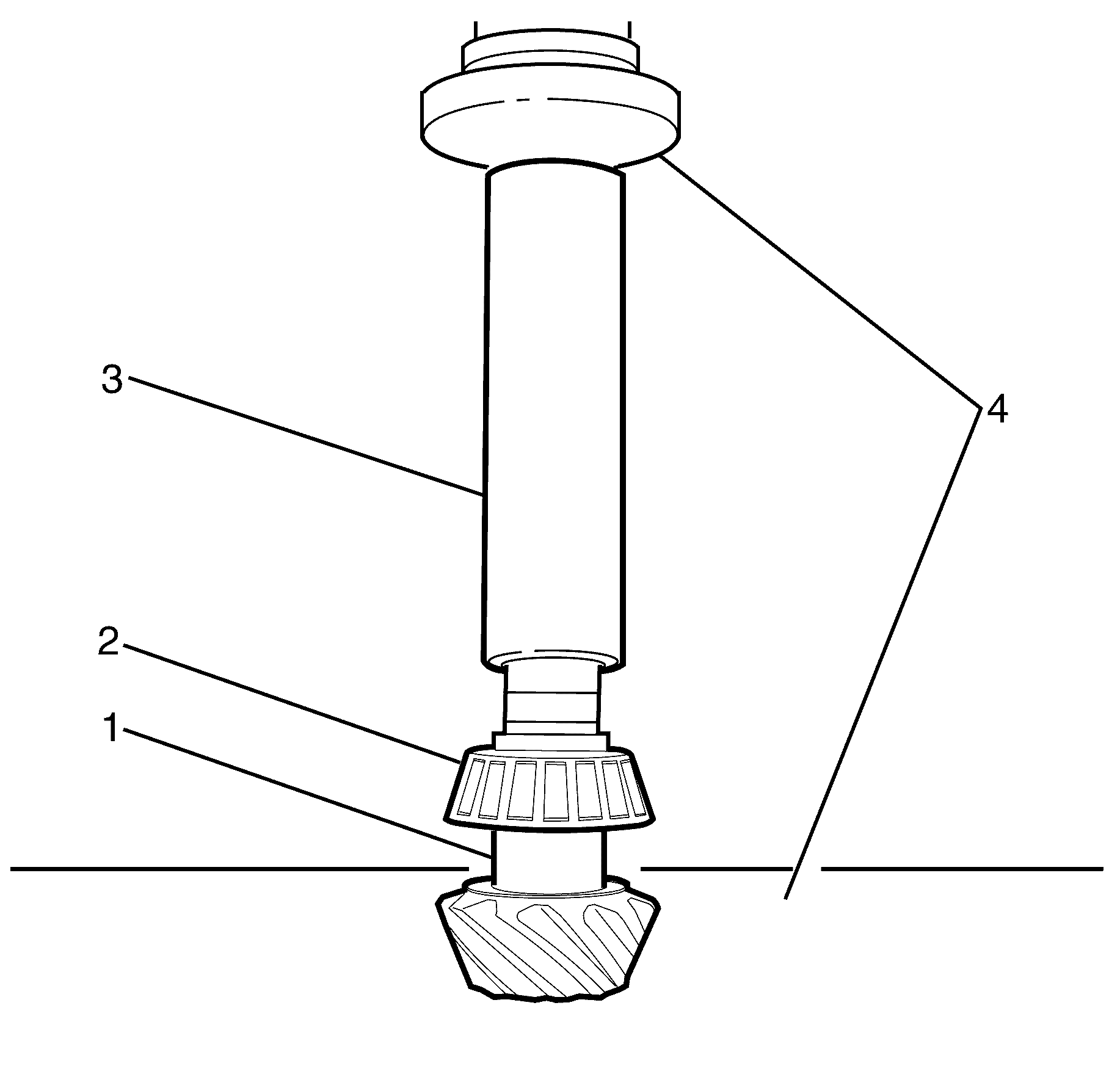
Note: Use DT-48807 (3) to aid in pinion bearing (2) installation.
Note: Position the pinion gear (1) onto an aluminium plate in suitable press (4) before pressing the pinion head bearing (2) to prevent damage to the pinion (1).
Note: Use a suitable press (4) to install the NEW differential pinion head bearing (2).
Warning: Refer to Safety Glasses Warning in the Preface section.
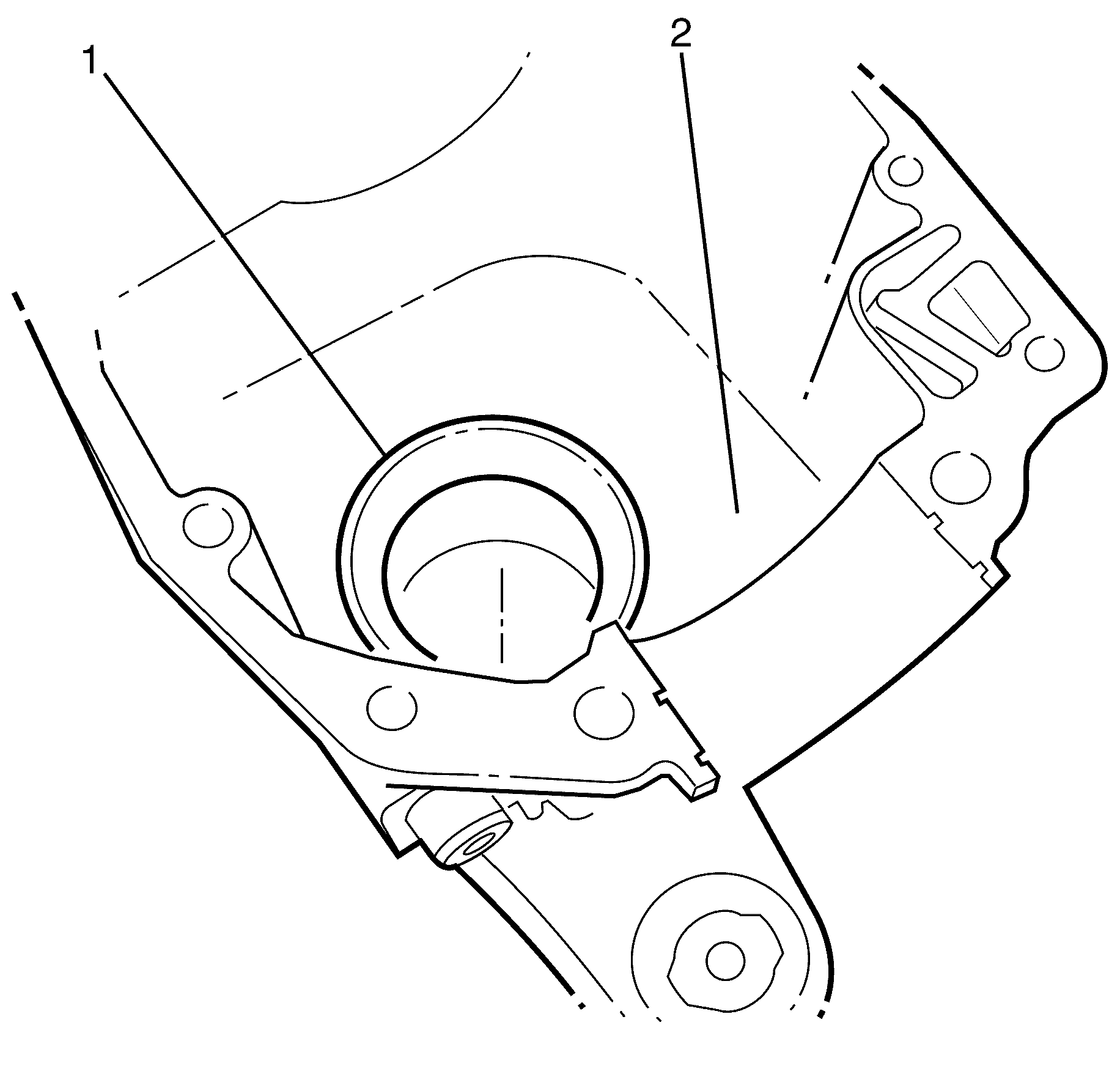
Note: To make fitting easier cool the bearing cups (2).
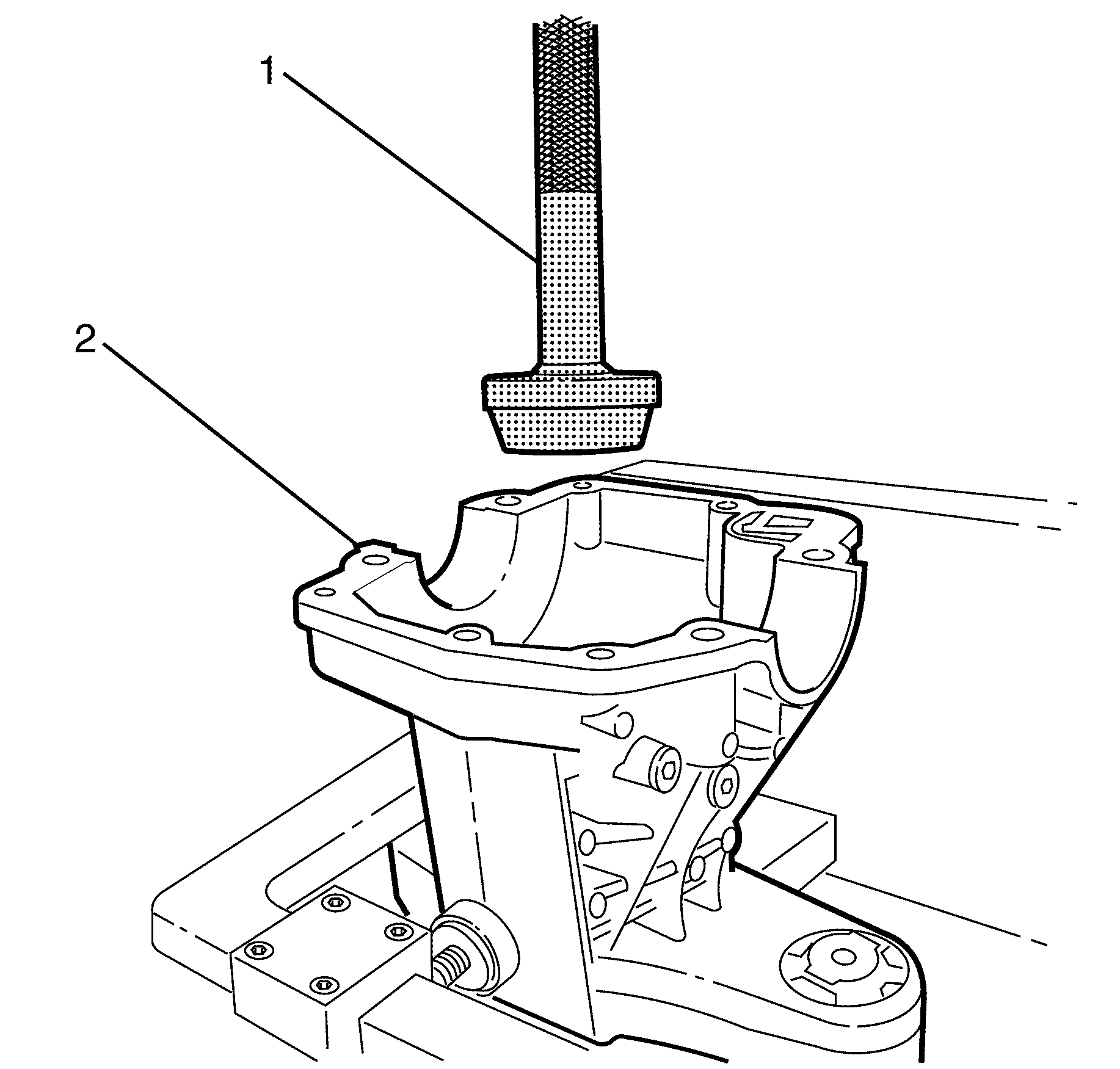
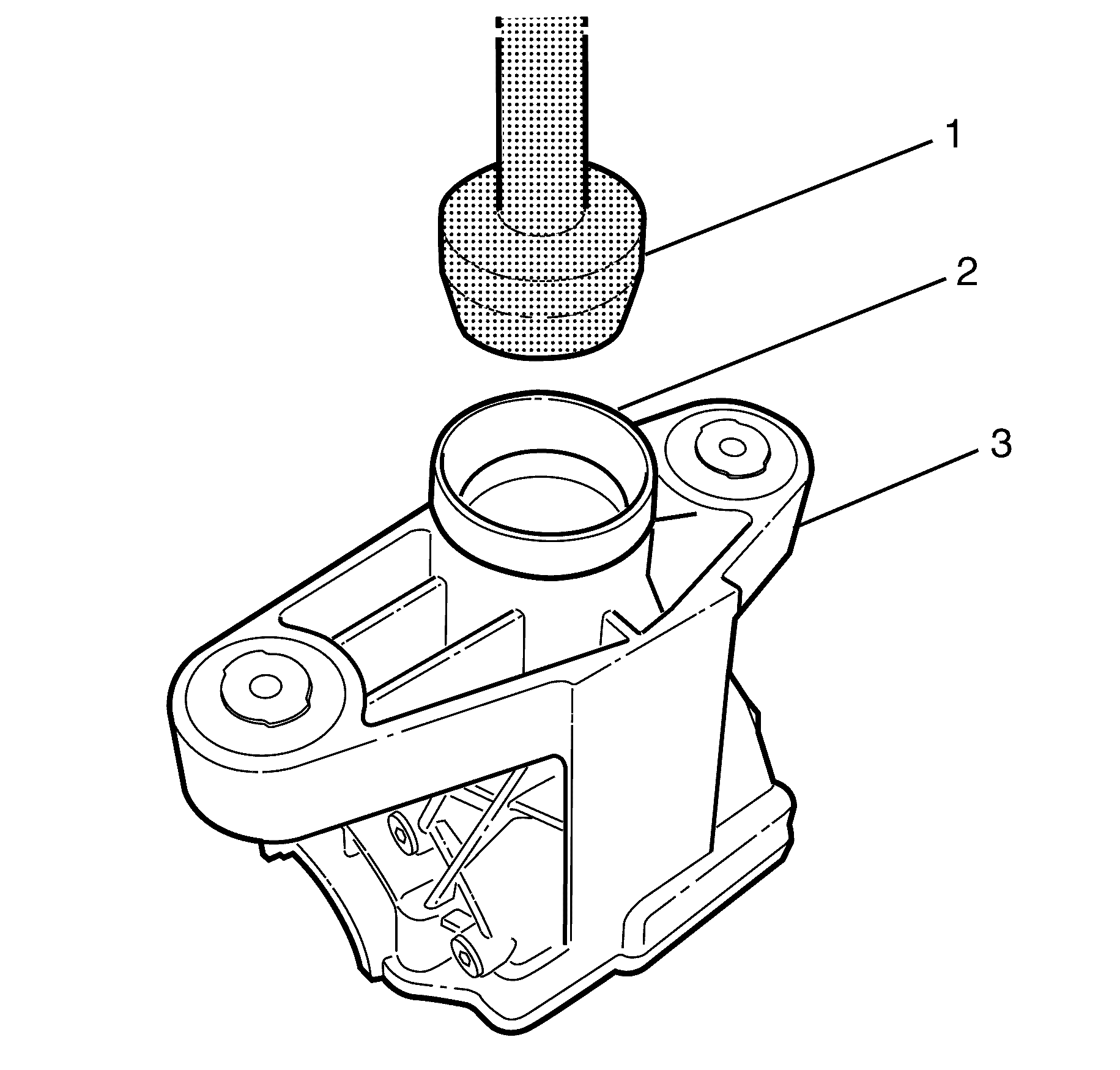
Note: To make fitting easier cool the bearing cup (2).
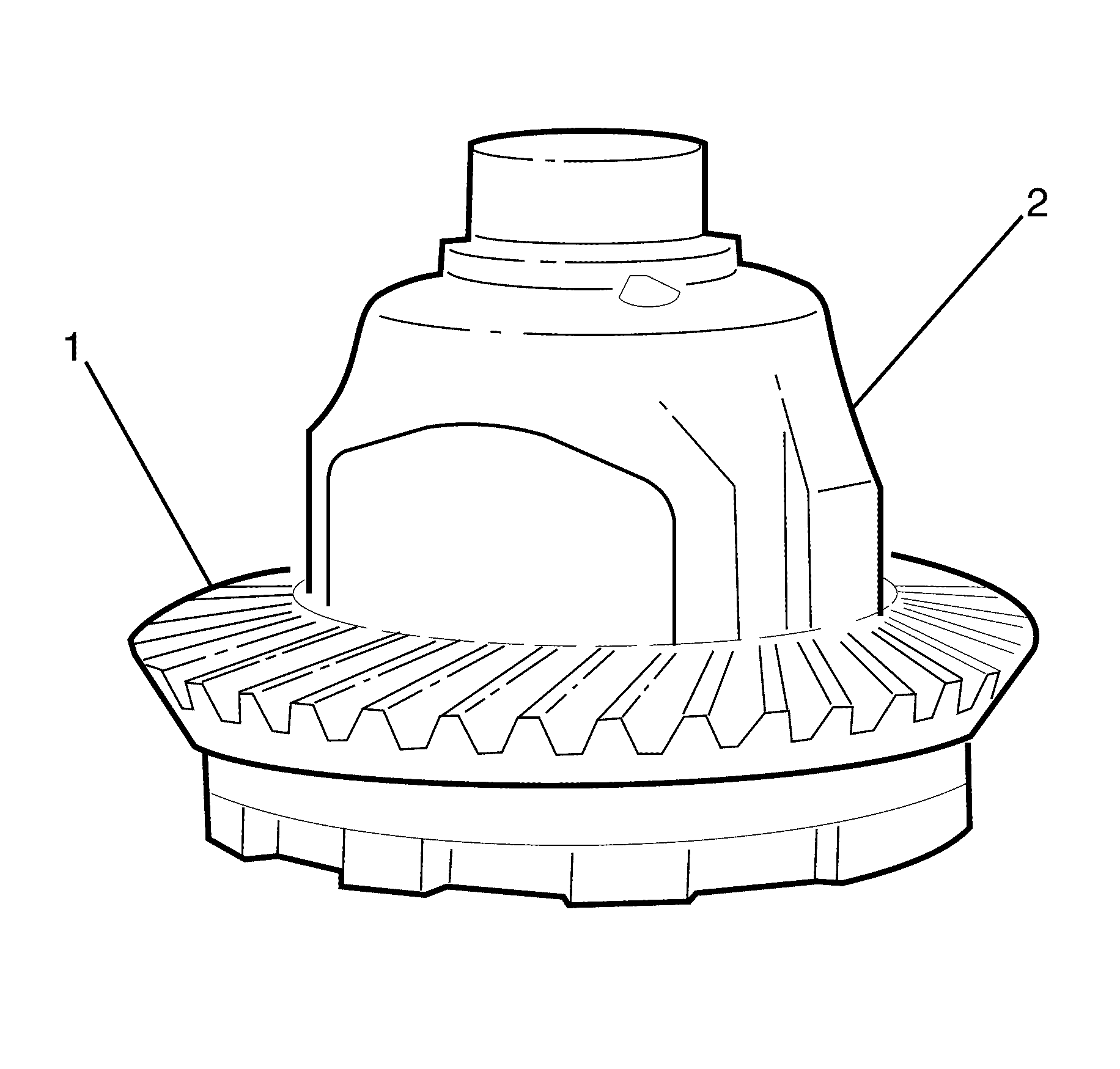
Note: Warm the ring gear (1) evenly using a hotplate until it fits over the differential (2).
Note: Do not fully tighten the NEW ring gear to differential retaining bolts at this stage.
Note: The ring gear has to cool before the ring gear to differential retaining bolts can be tightened.
Caution: Refer to Fastener Caution in the Preface section.
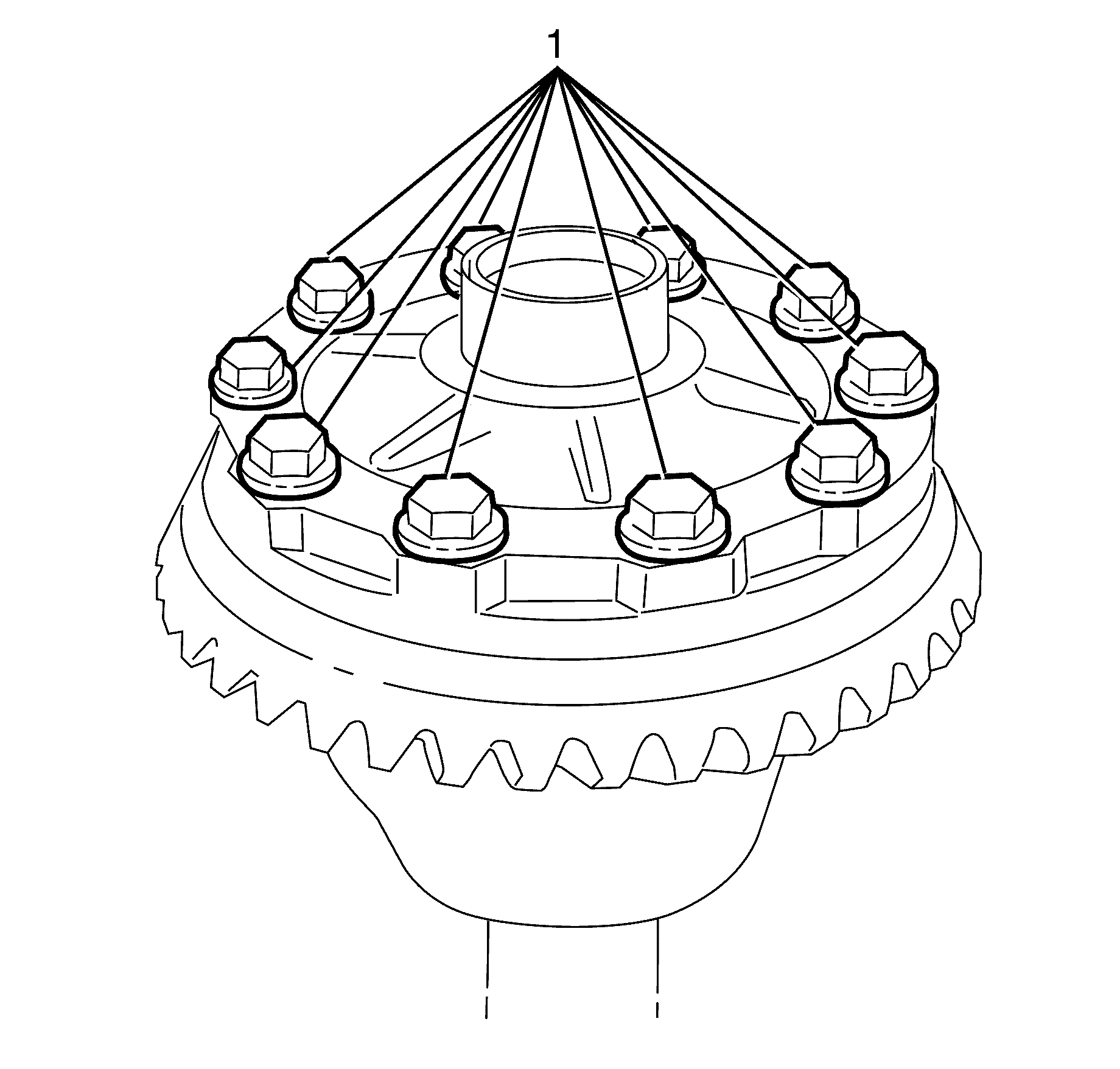
Note: The ring gear has to cool before the ring gear to differential retaining bolts (1) can be tightened.
Note: Tighten the ring gear to differential retaining bolts (1) working diagonally.
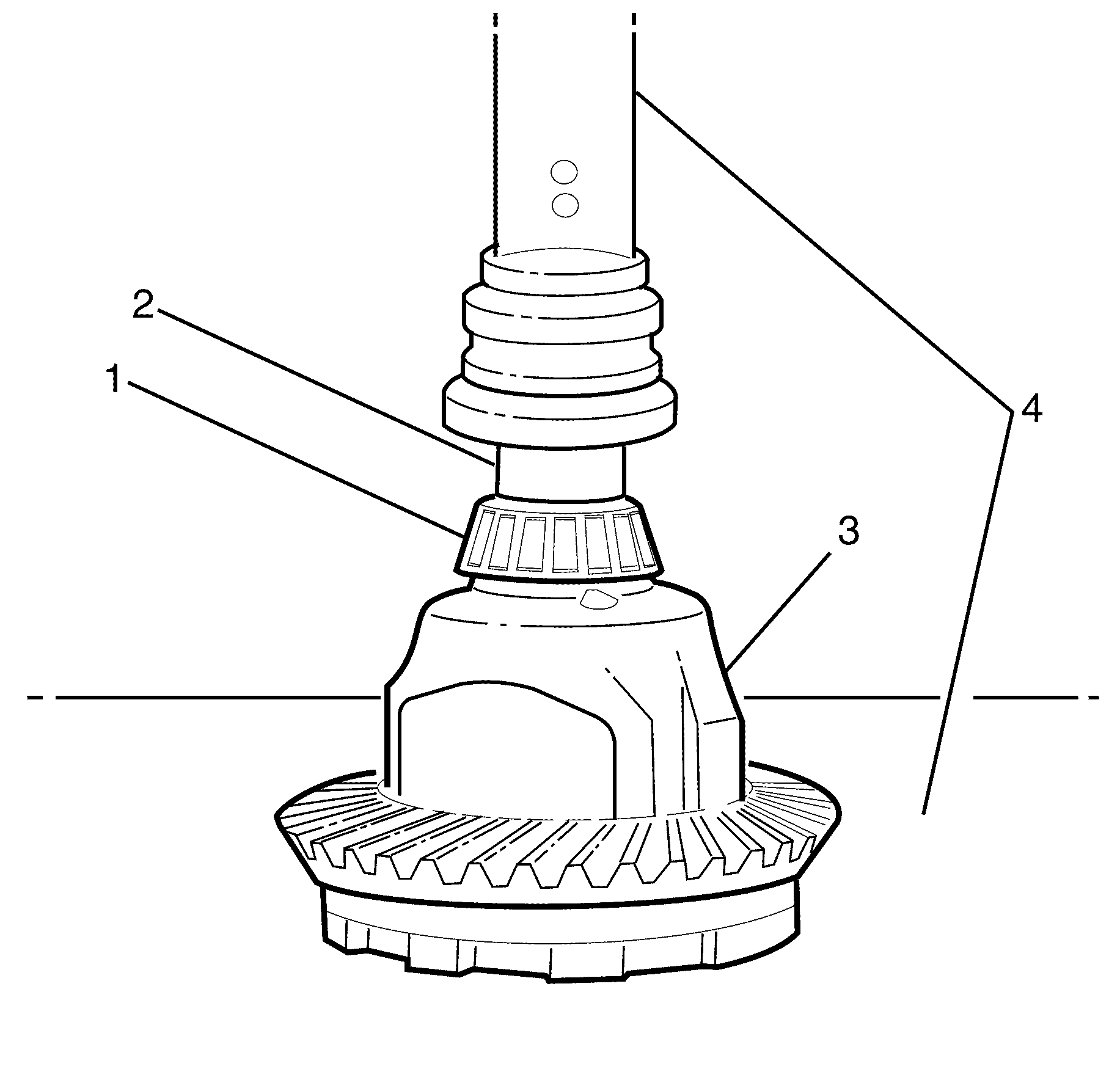
Note: Use a suitable press (4) to install the right differential bearing (1).
Note: Use a suitable press (4) to install the left differential bearing.
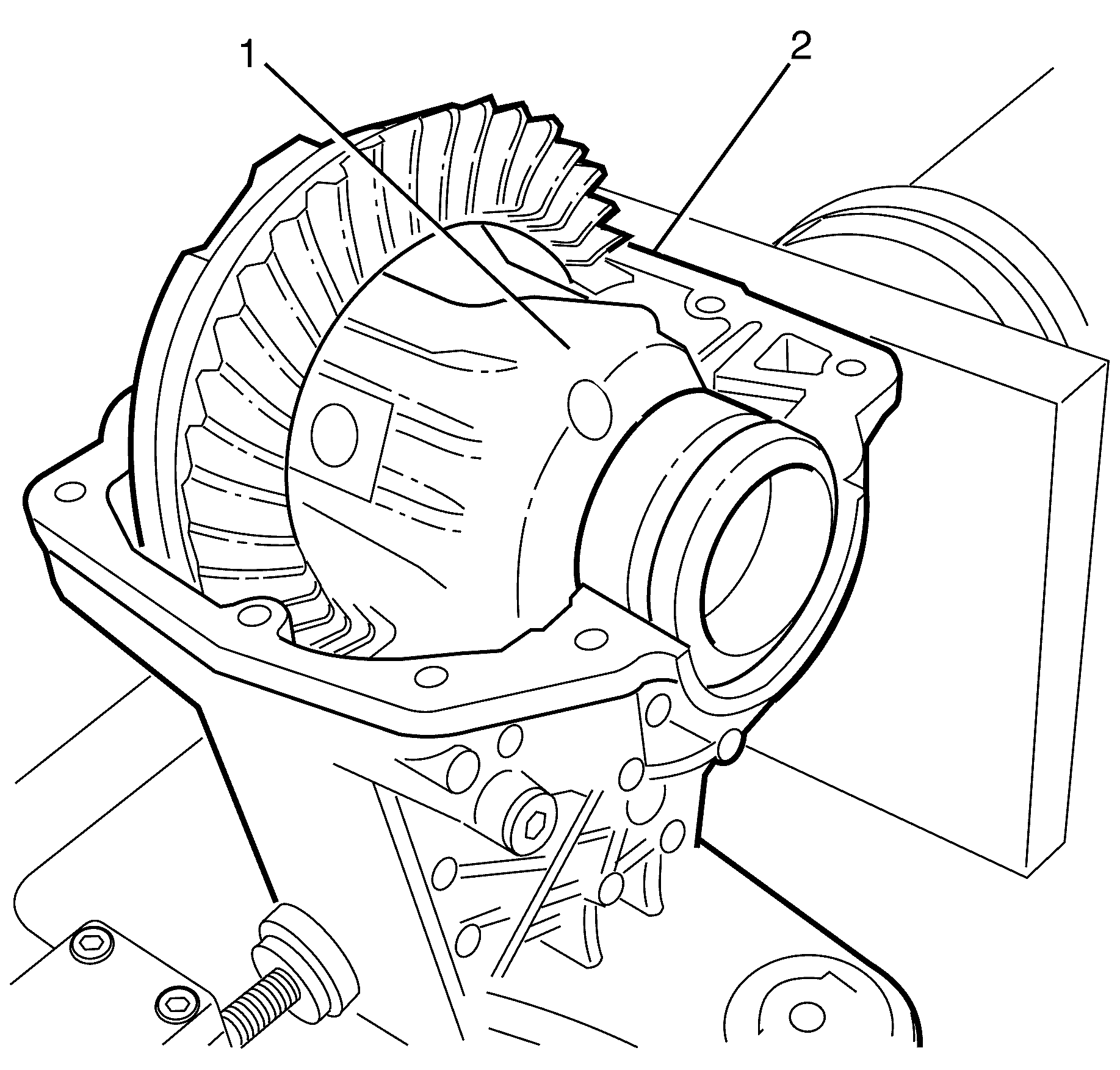
Note: Position the differential (1) to the differential housing (2) using a suitable tool or with the aid of an assistant.
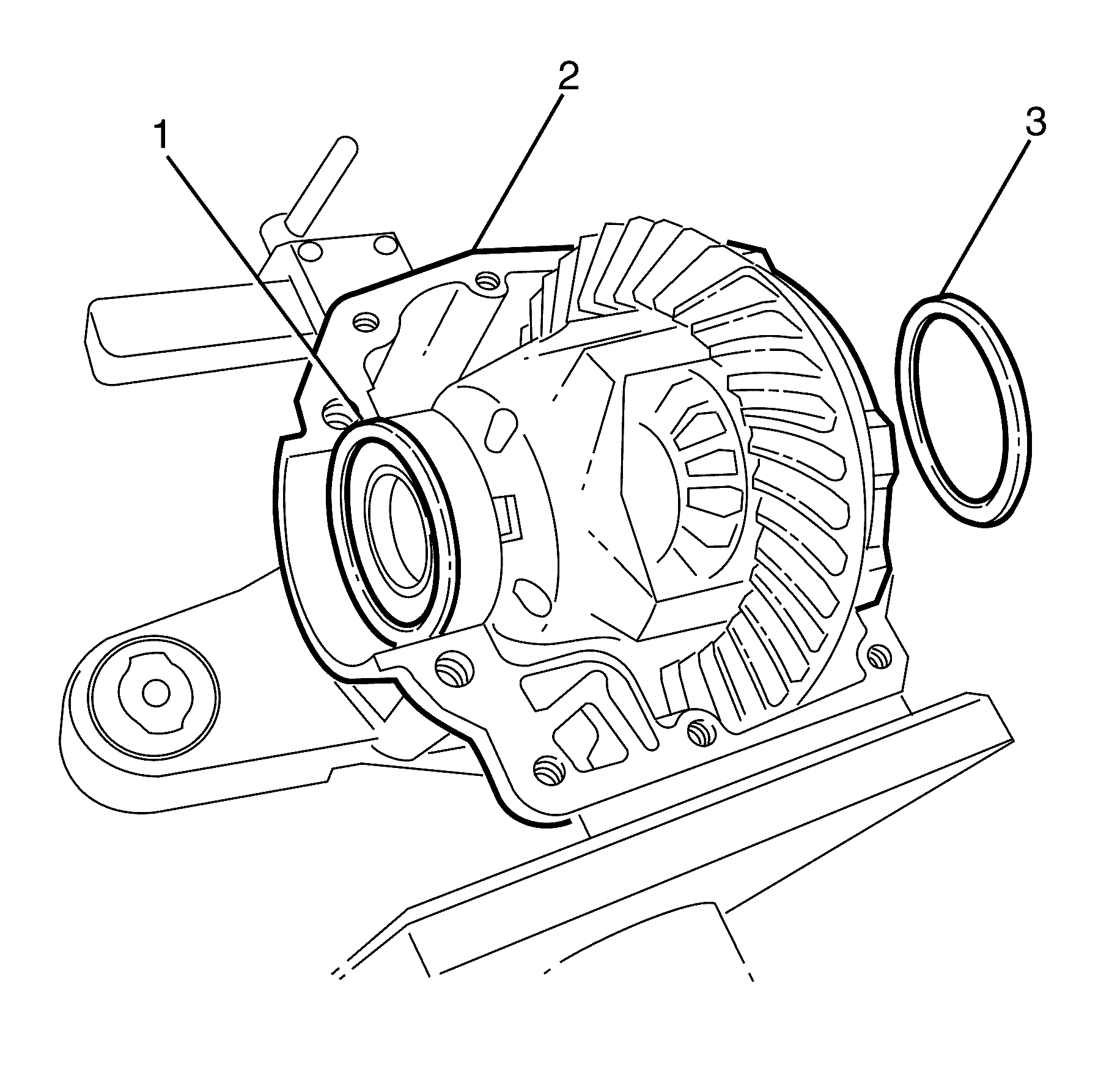
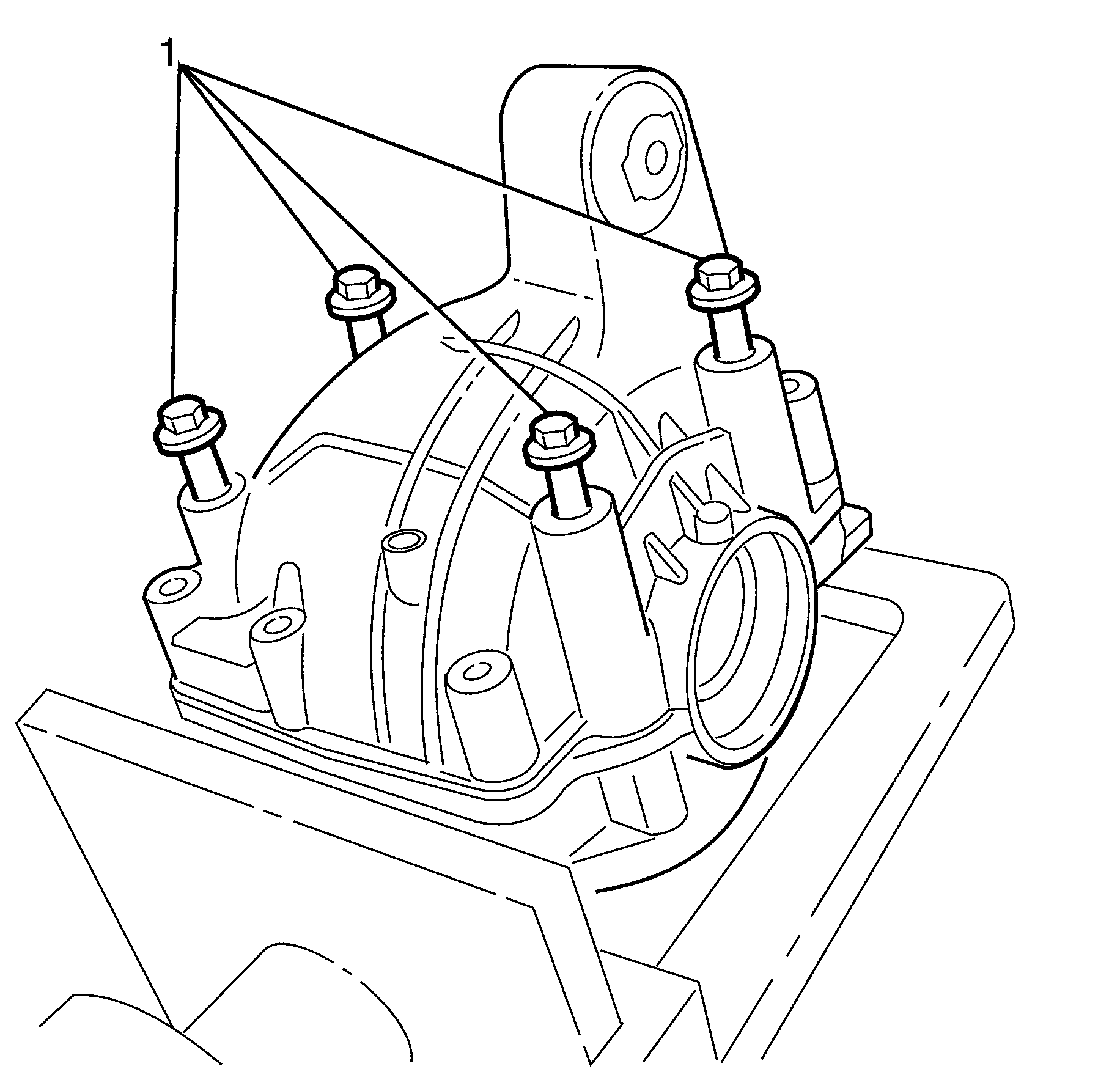
Note: Do not fully tighten the bearing bolts (1) is stage. The differential has to be able to move freely within the differential housing to allow fitment of the circlip.
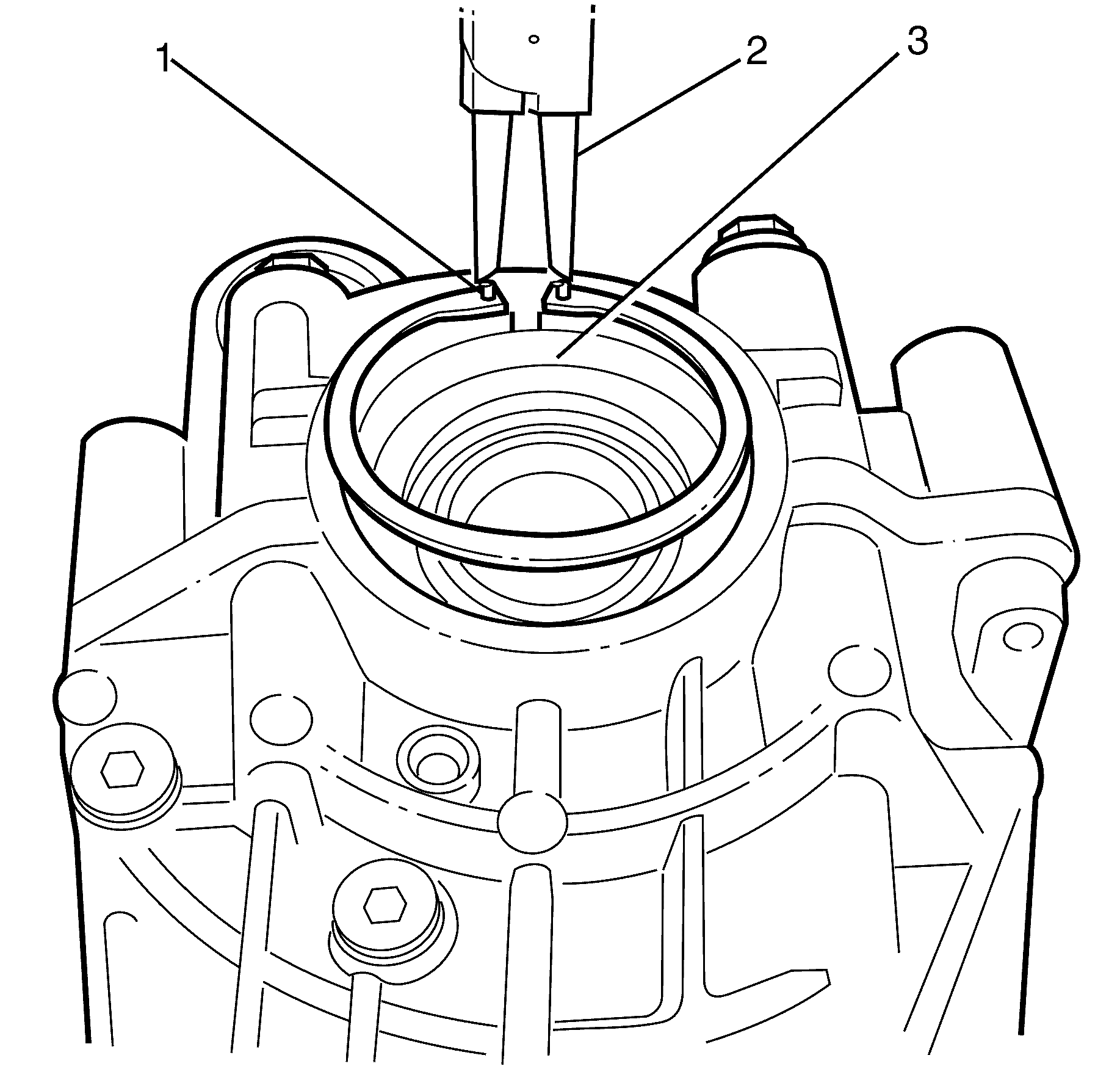
Note: Align the opening of the circlip (1) with the opening on the differential housing.
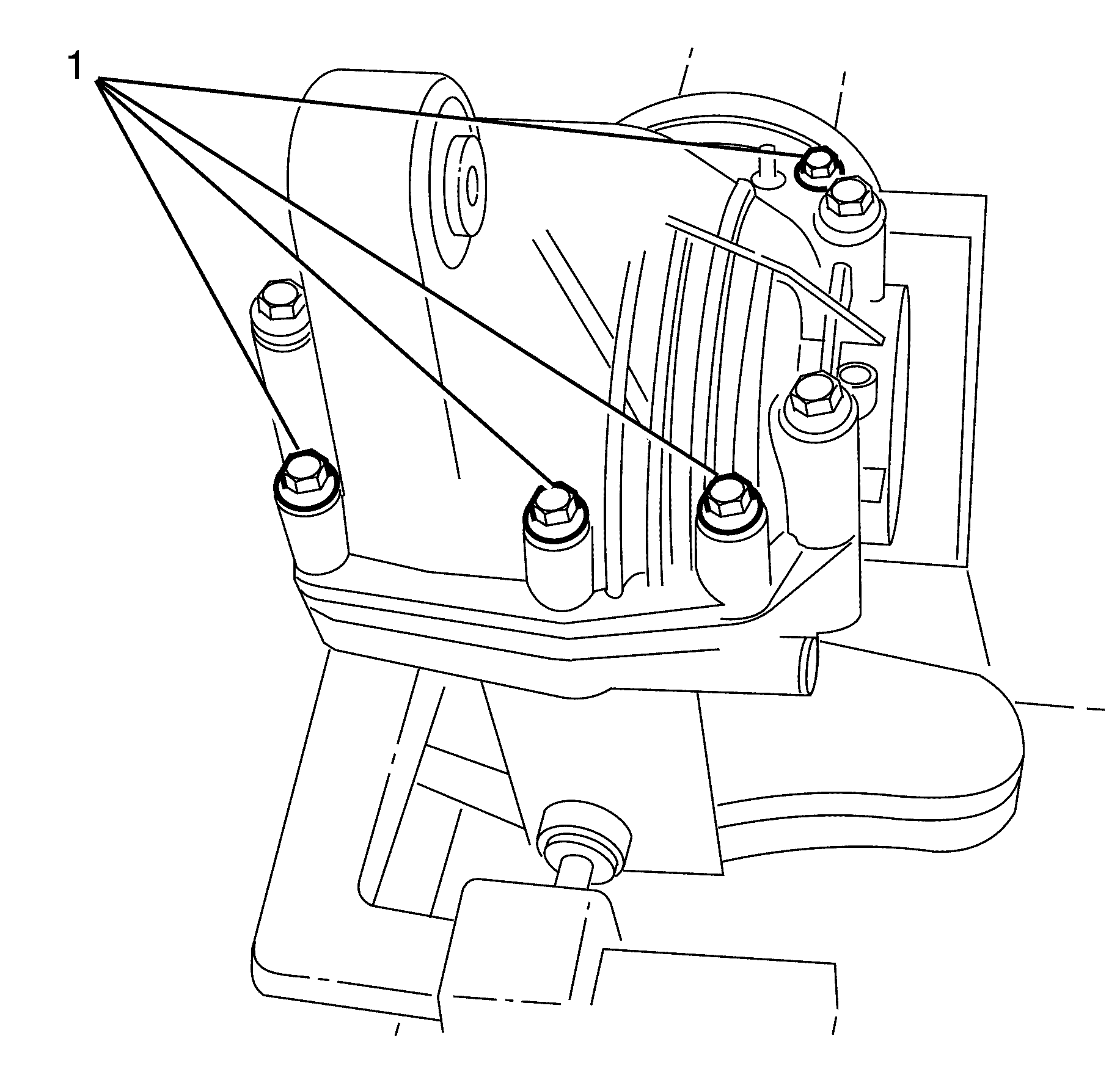
Note: Tighten the differential housing cover to differential housing retaining bolts (1) working diagonally.
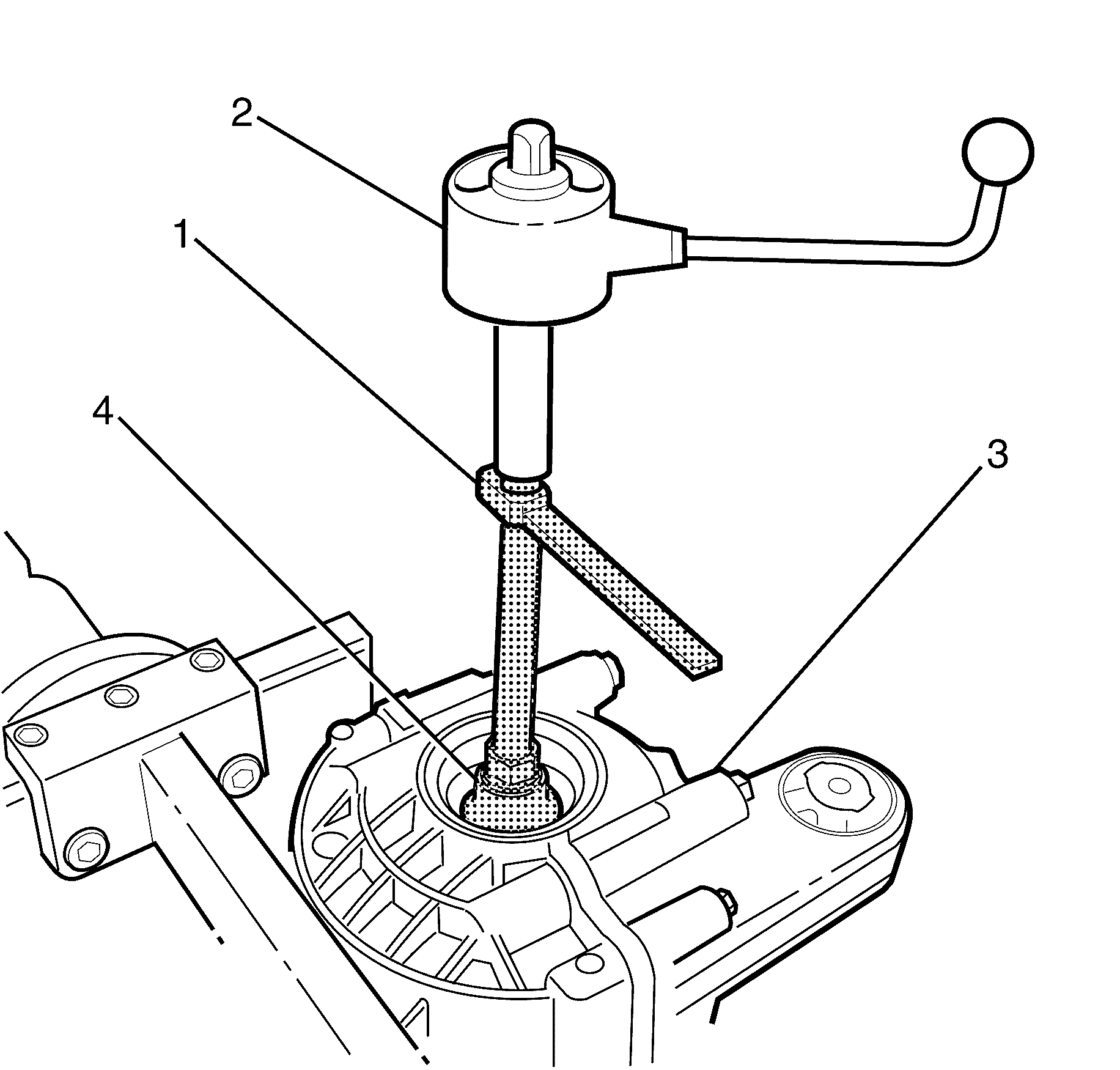
Note: This figure is for NEW bearings only.
| • | Remove the rear differential housing. |
| • | If turning torque is too high or too low, fit a thinner or thicker shim respectively. |
| • | Repeat from steps 5-11 from the disassembly procedure then from step 27 onwards in the assembly procedure. |
| • | Check turning torque. Repeat until the turning torque is correct. |
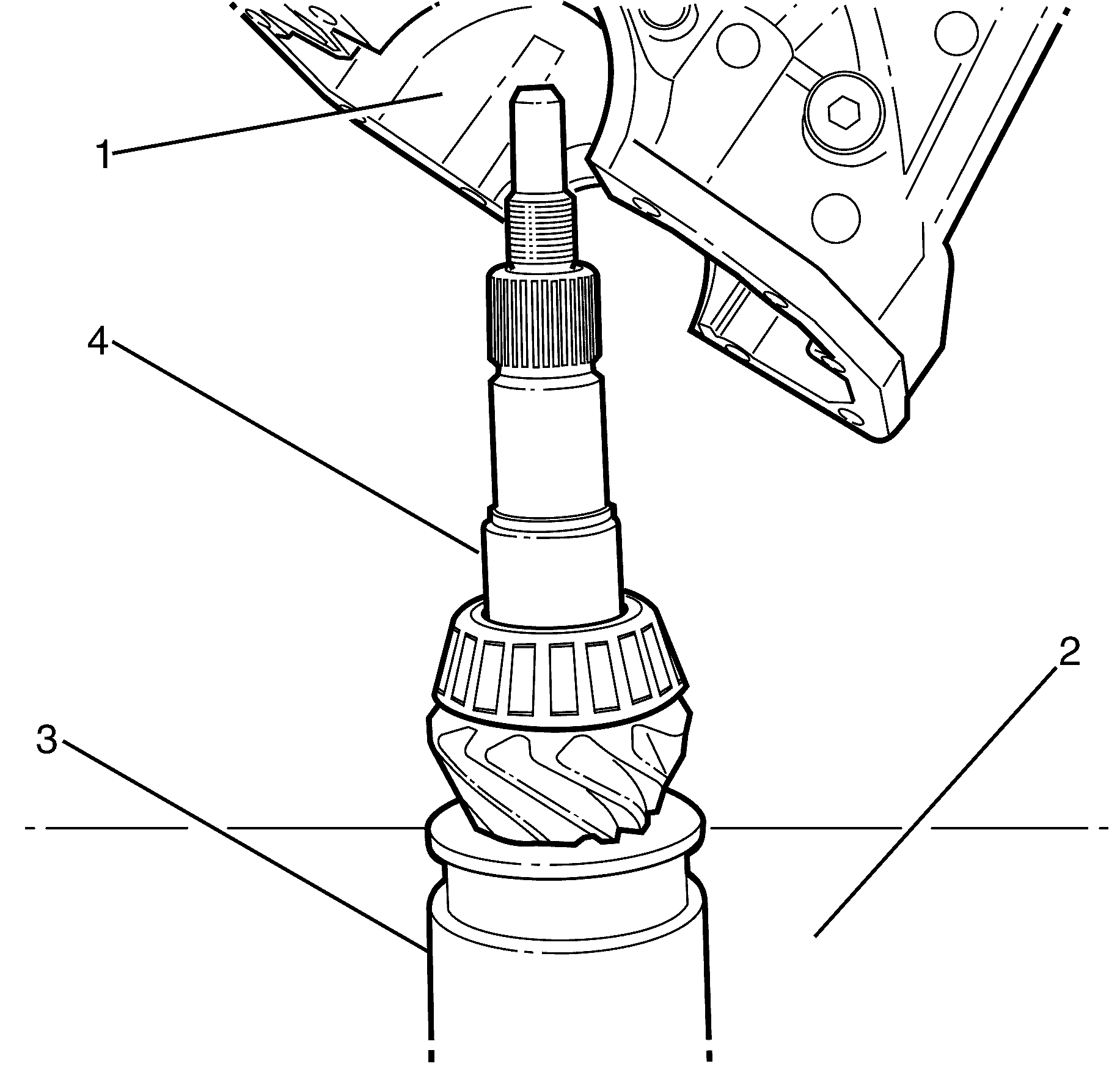
Note: The differential housing (1) must not rest on the press (2). Use a suitable supporting tool (3) to elevate pinion (4).
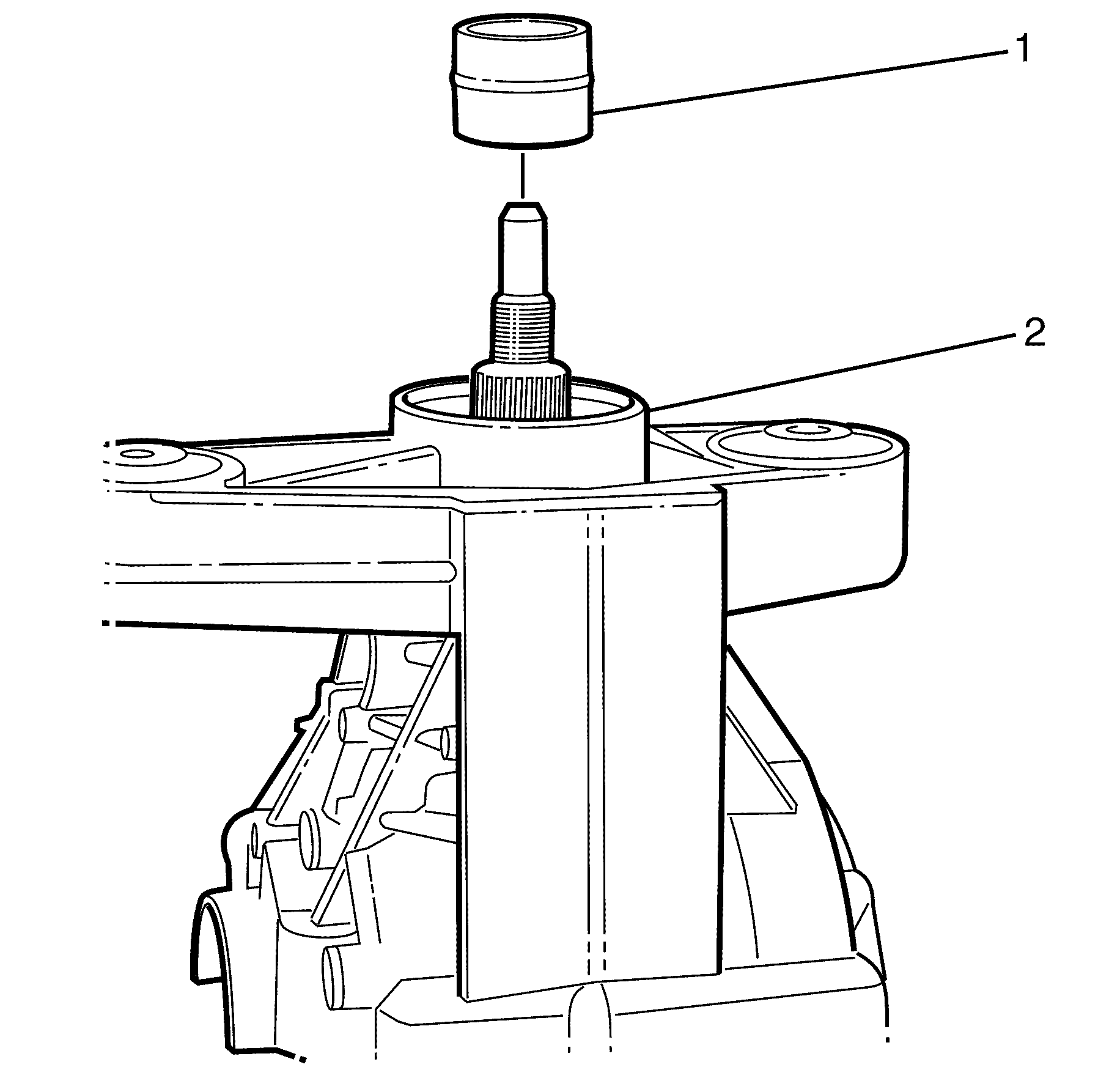
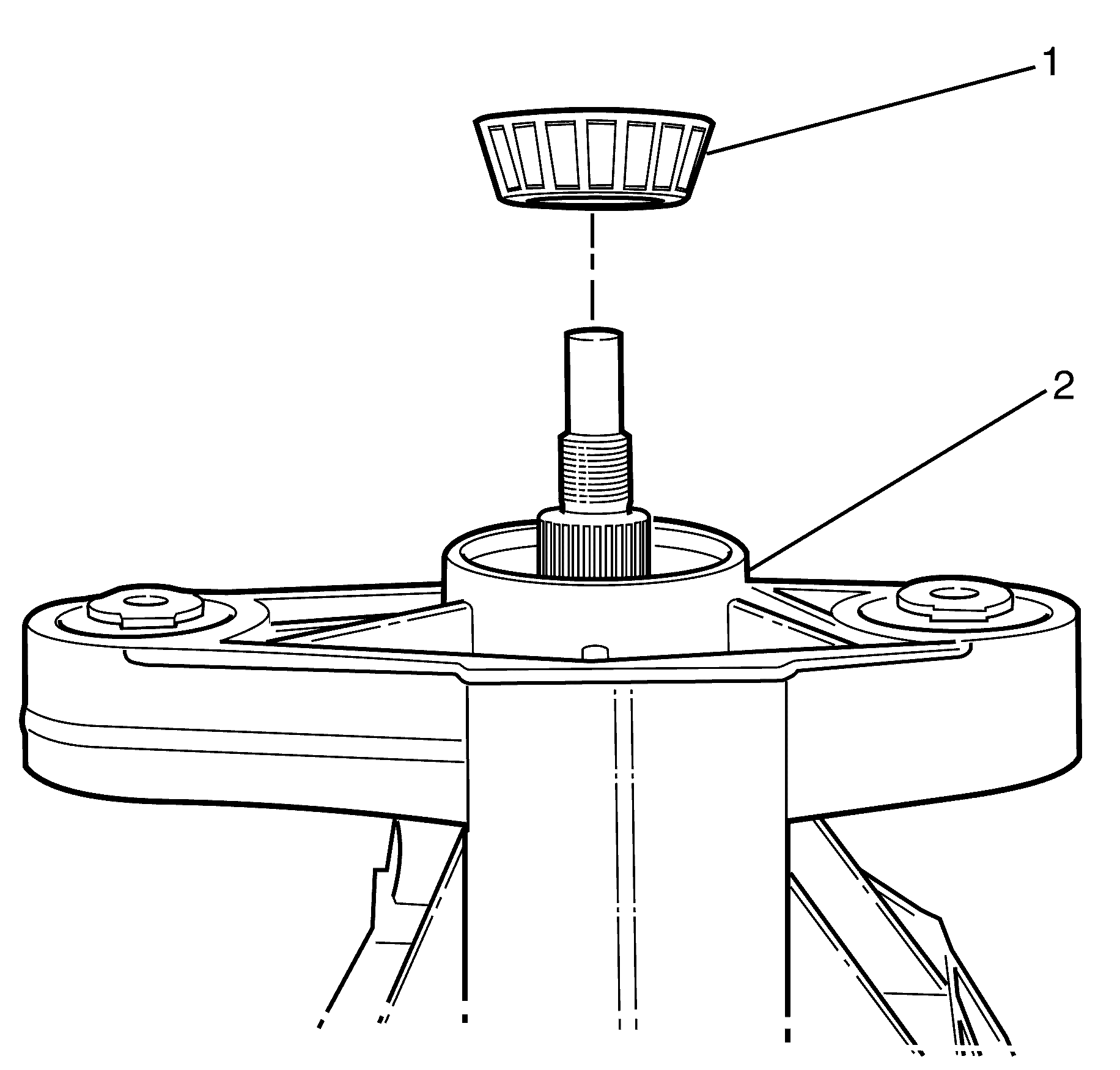
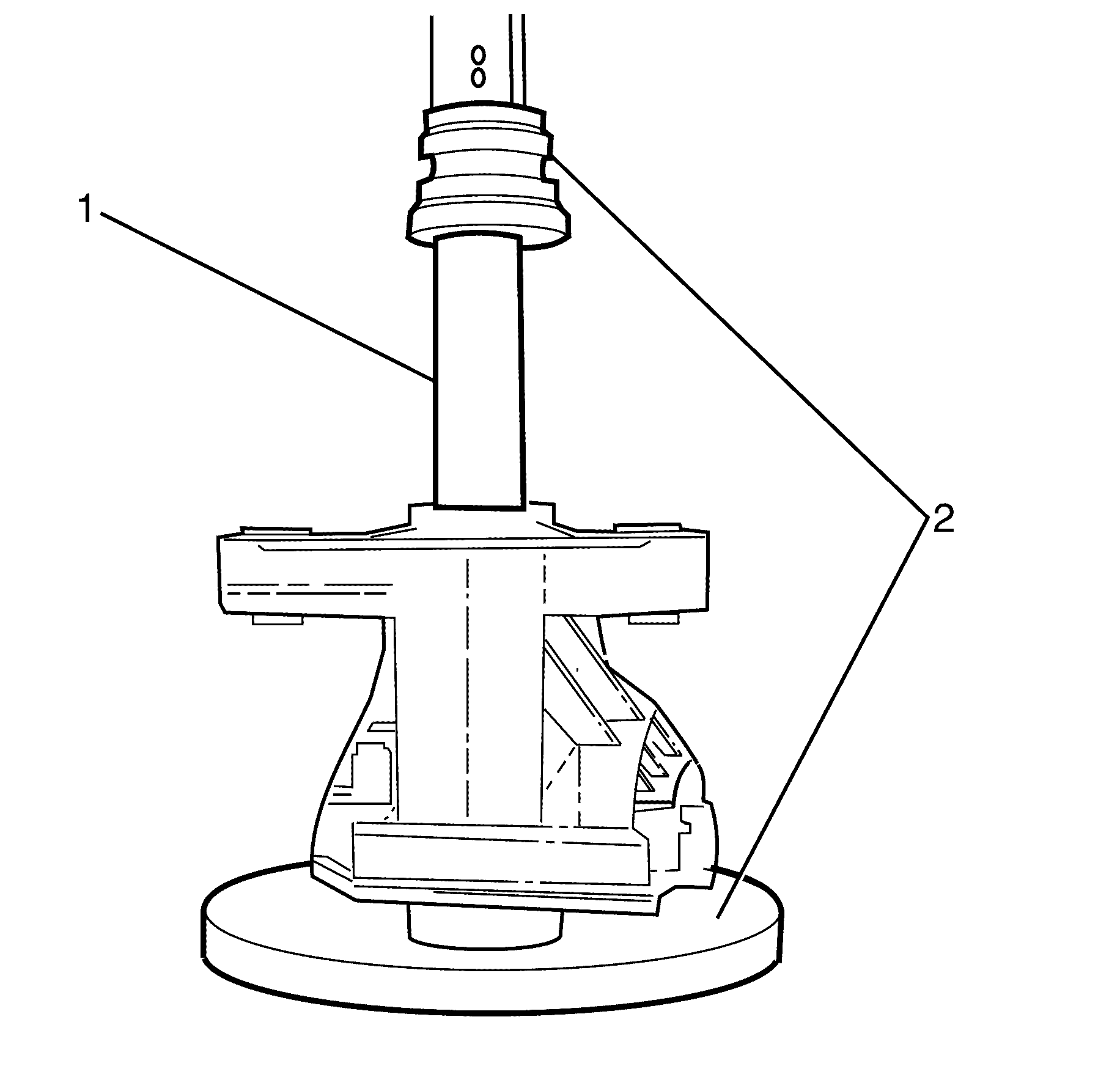
Note: Take care to only press the tail bearing until it rests on the collapsible spacer so that it is not damaged.
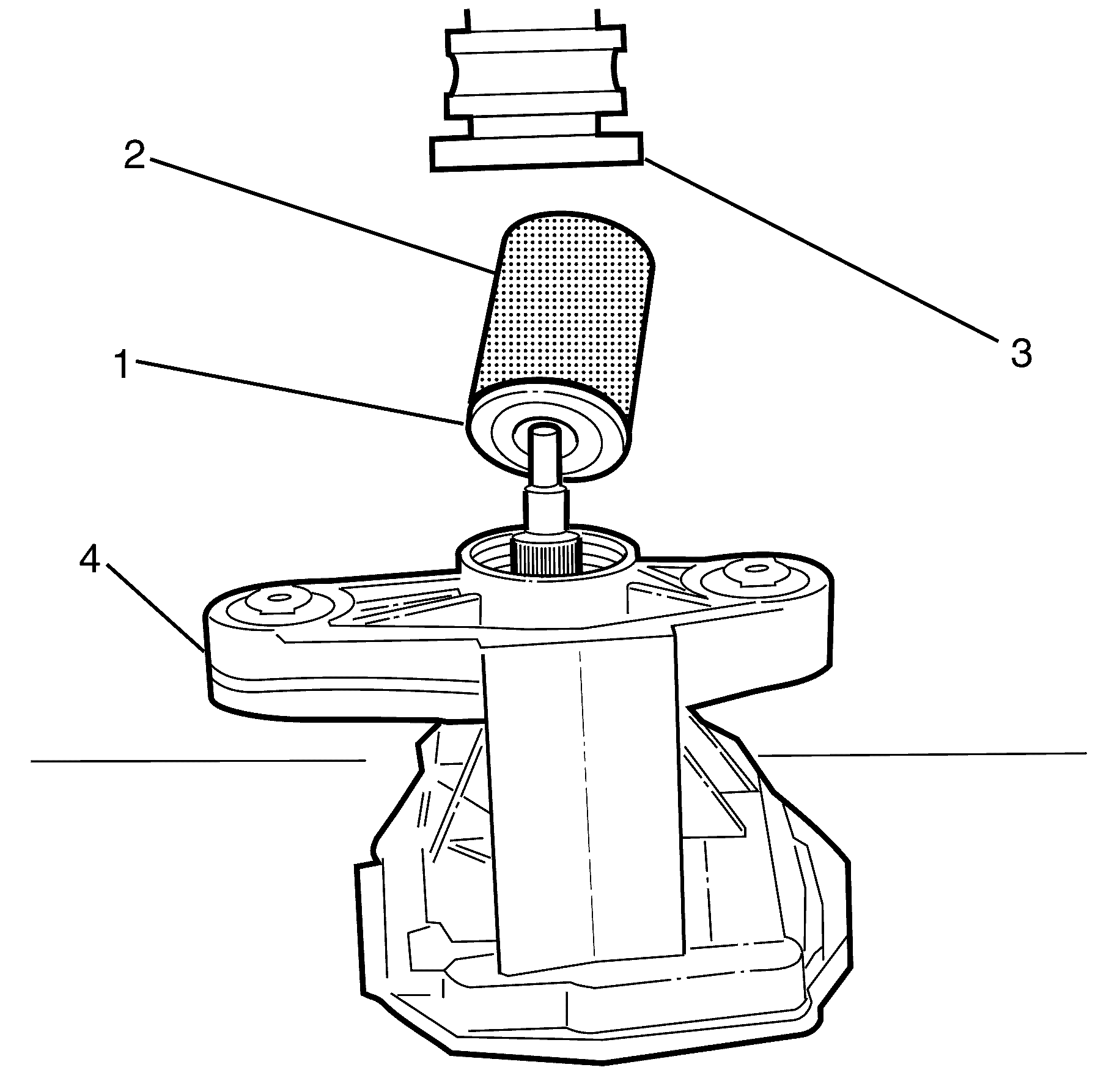
Note: Use DT-48727 to install the seals to correct depth.
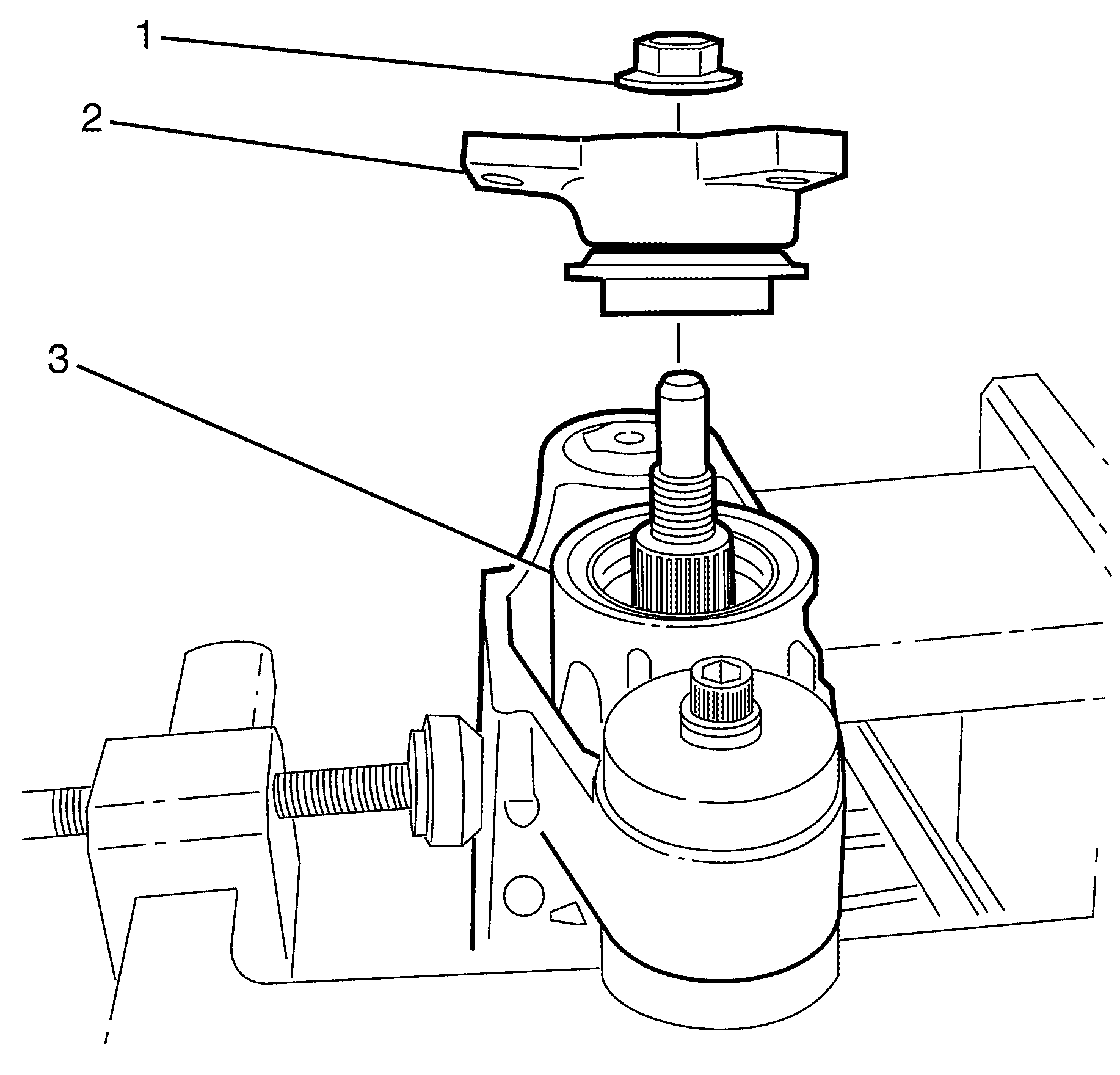
Note: Do not fully tighten the NEW prevailing torque pinion flange retaining nut at this stage. Overtightening will require disassembly and fitment of a new collapsible spacer and possibly bearings.
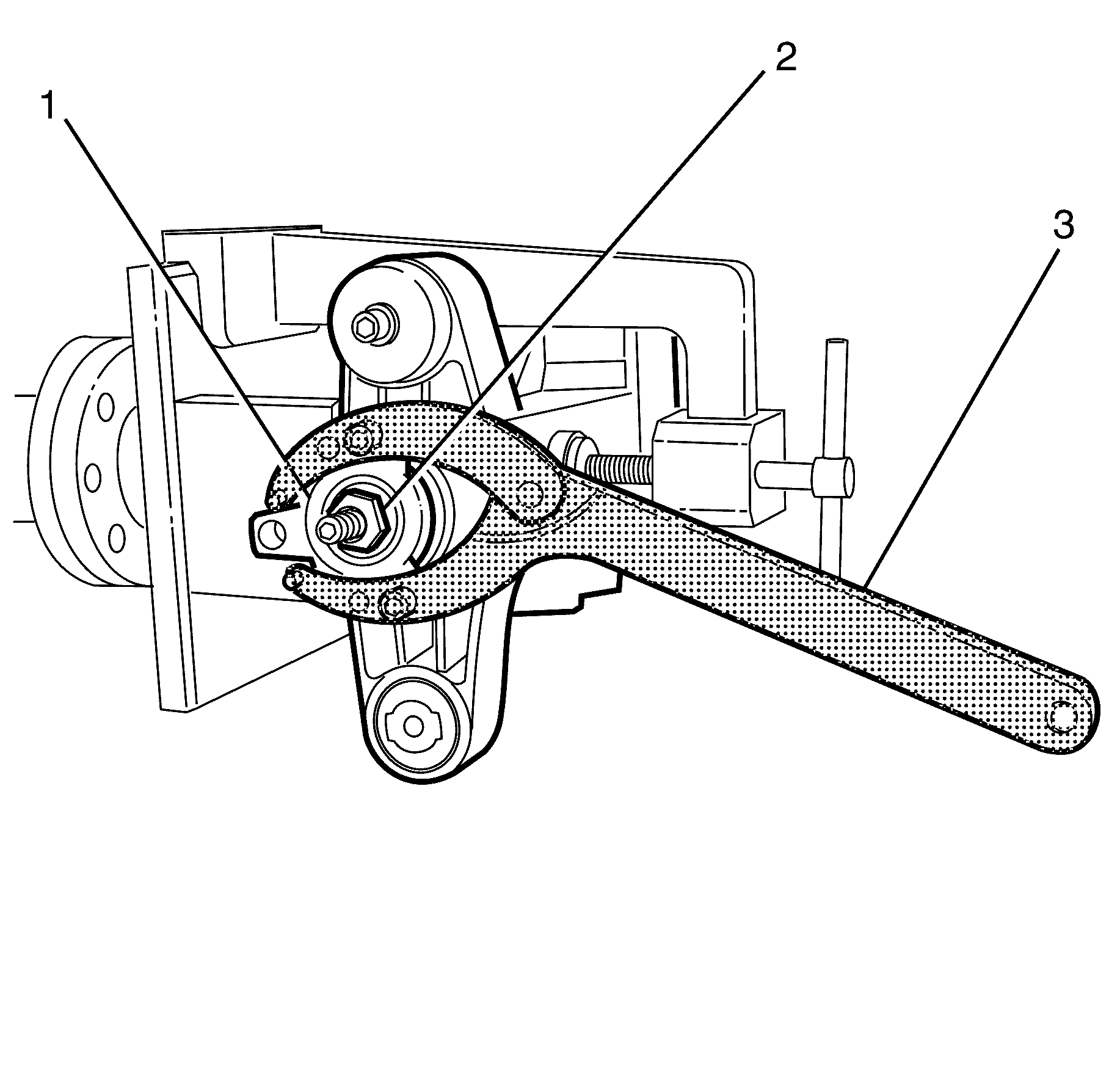
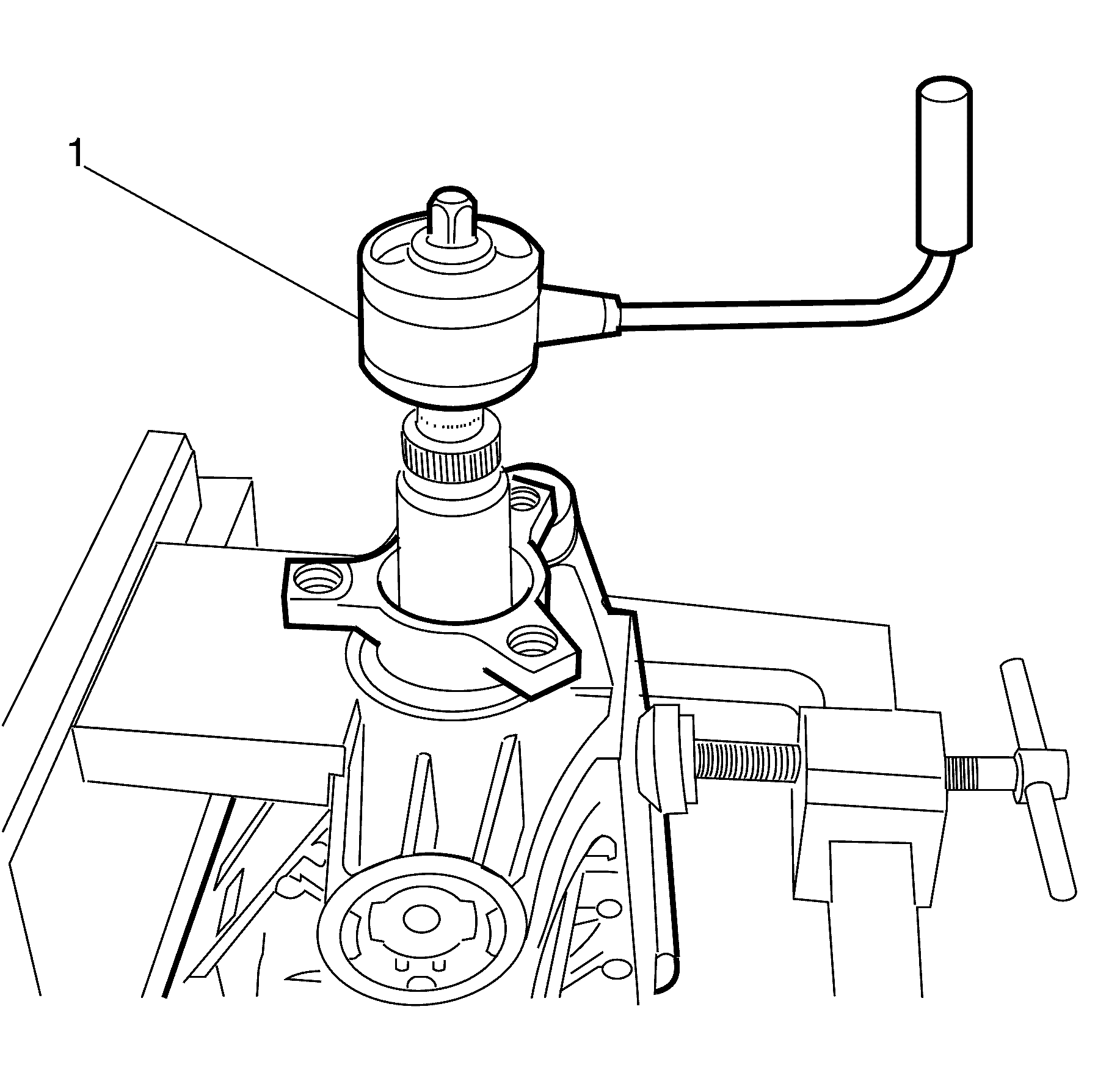
Note: This torque figure is for NEW bearings only.
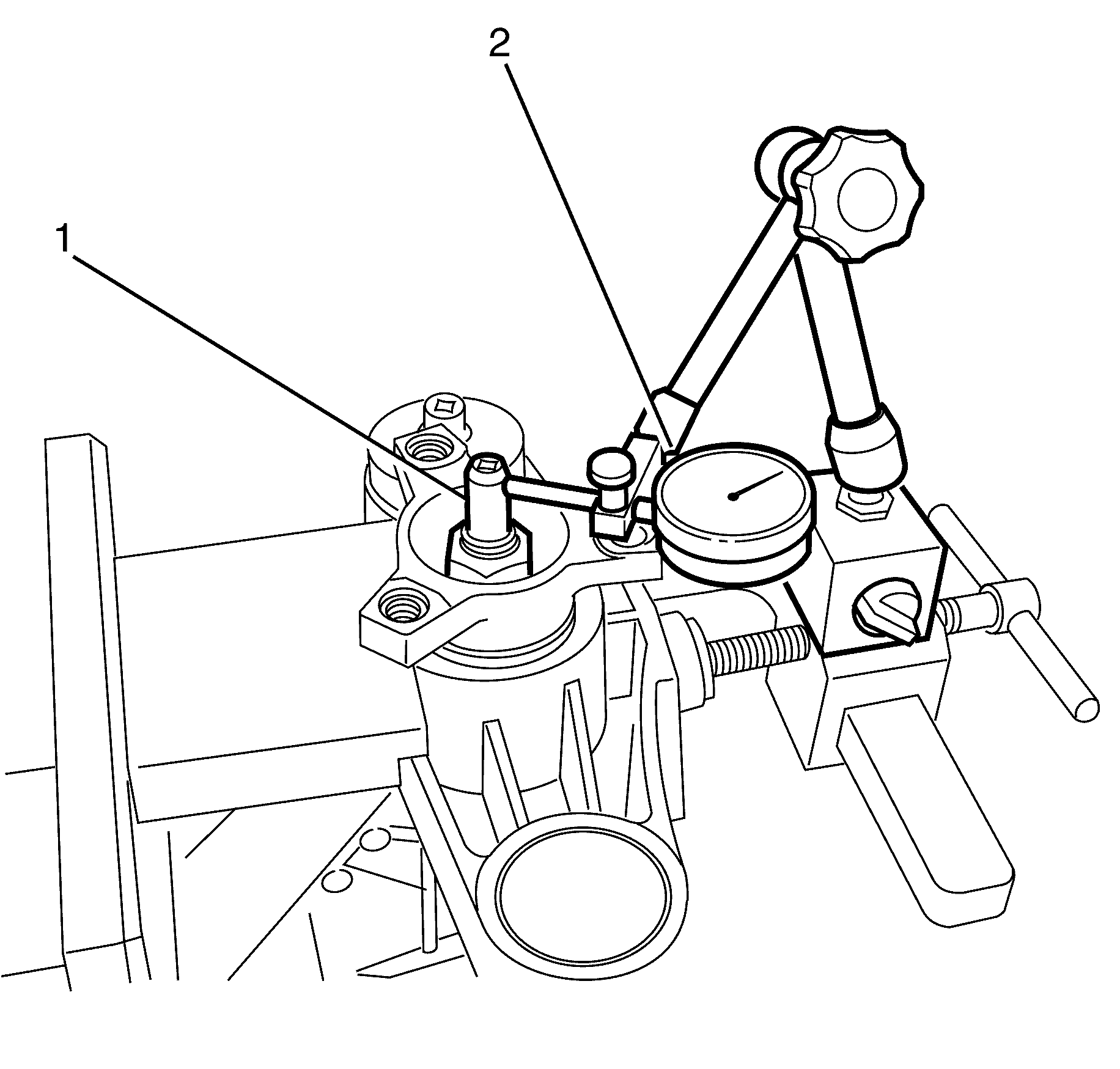
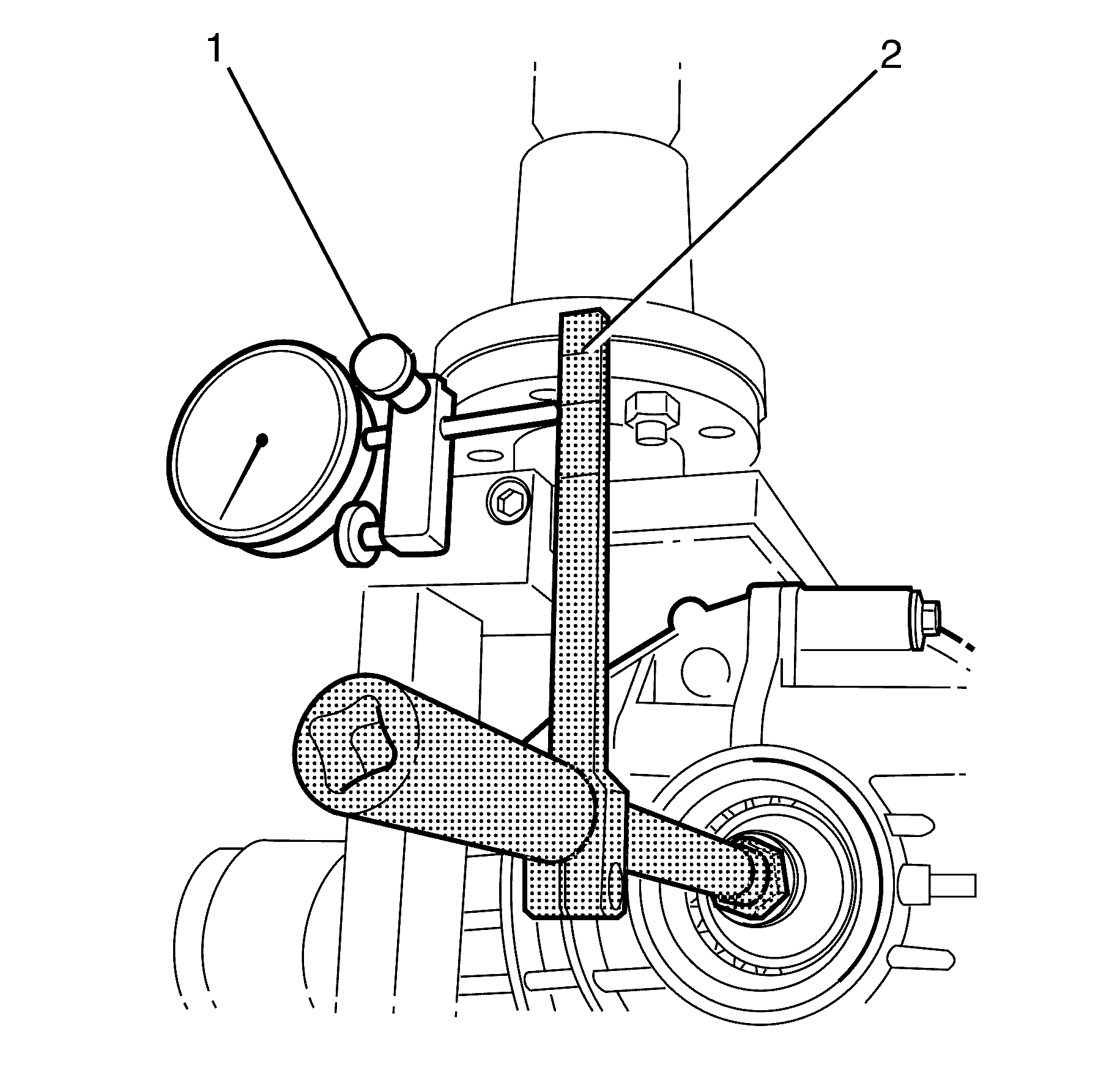
Note: The location of the dial gage on the backlash tool (2) arm corresponds to the edge of the ring gear (210 mm)
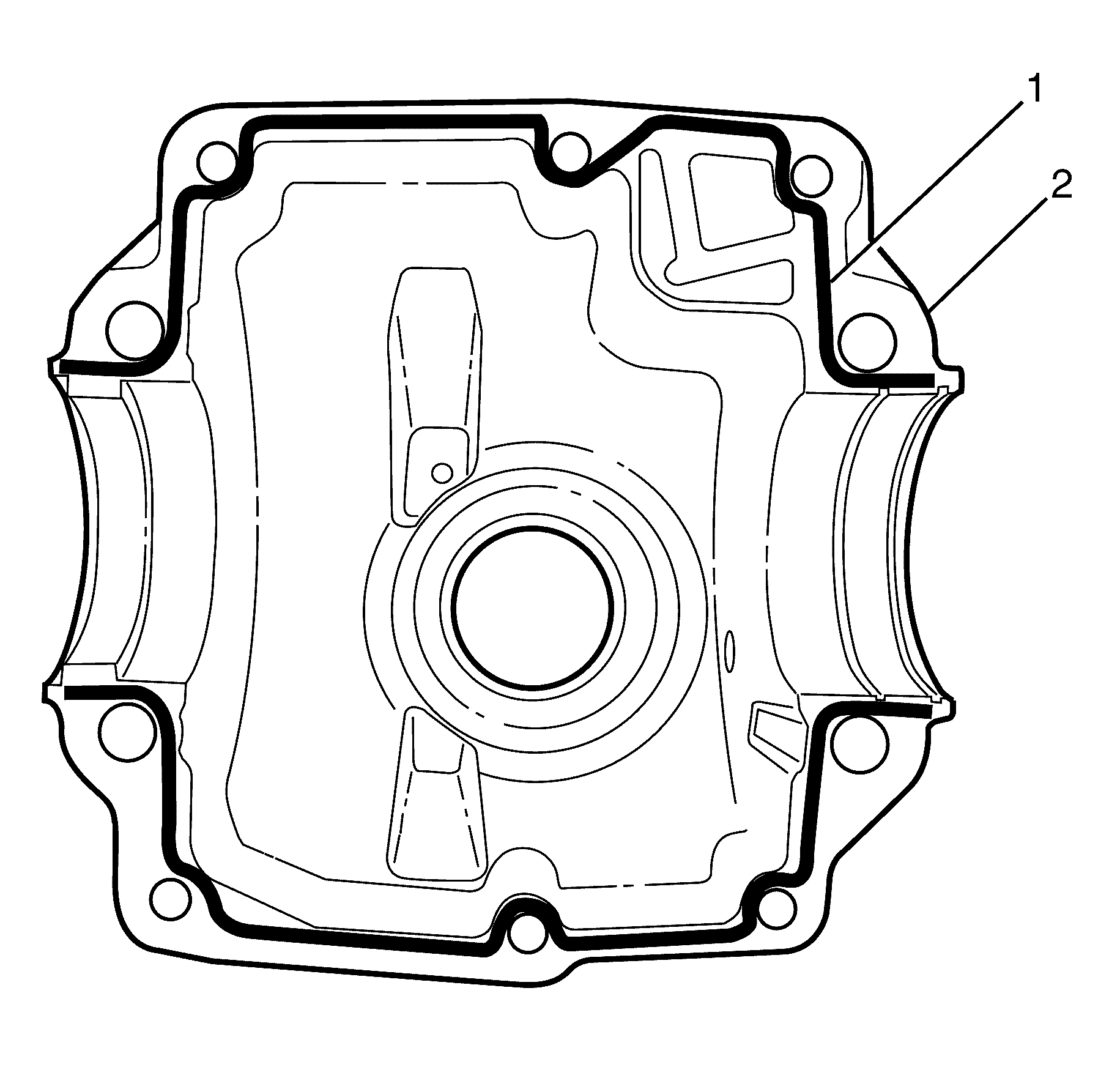
Note: Apply a 1 mm liquid seal bead (1) to the differential housing. Use the graphic as a template.
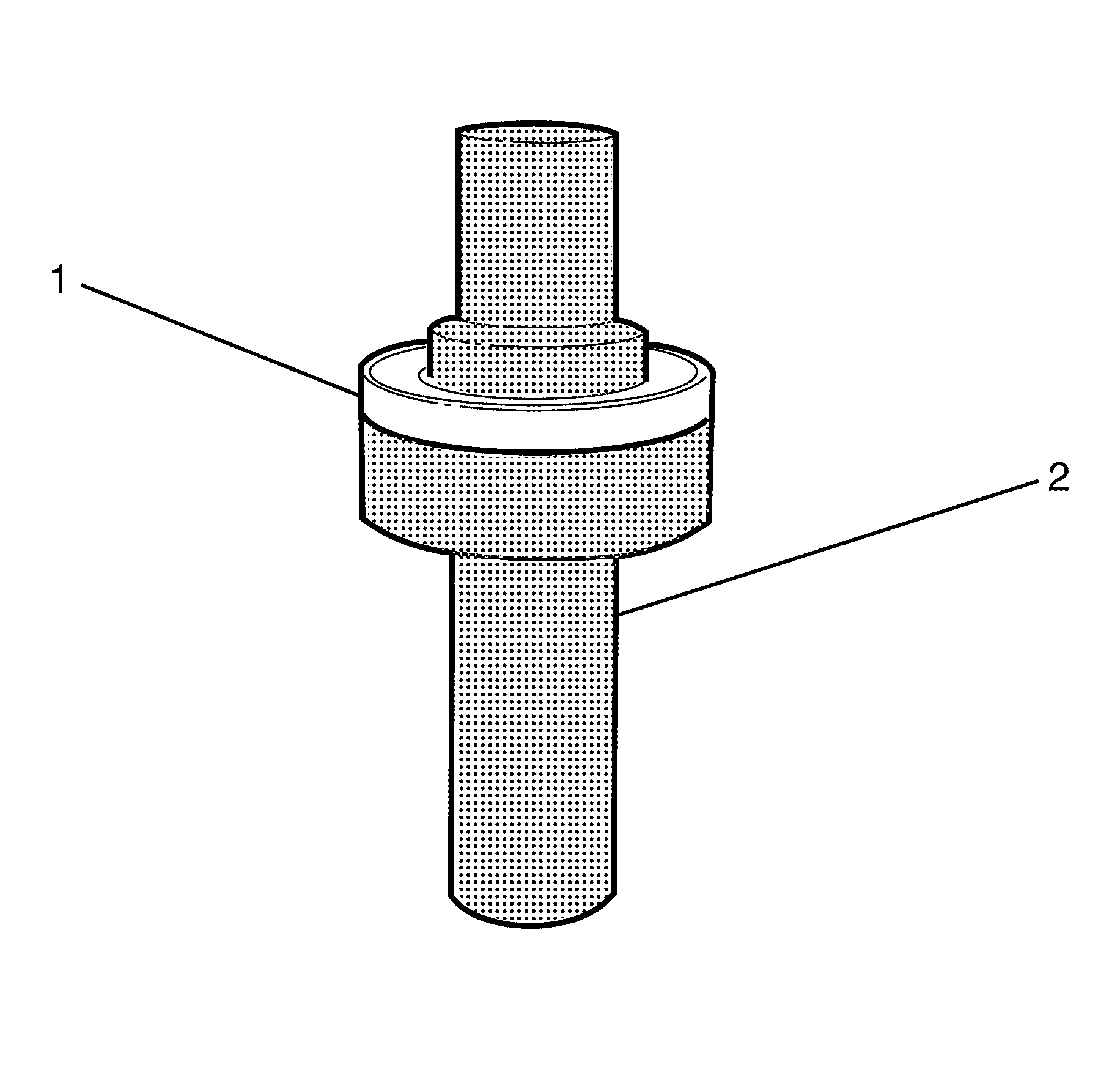
Note: The left and right rear axle shaft seals are different sizes so there are 2 different size installers. Make sure that the correct seal installer is used for the correct seal.
Note: Fill the space between the dust lip and the seal lip with the correct grease.
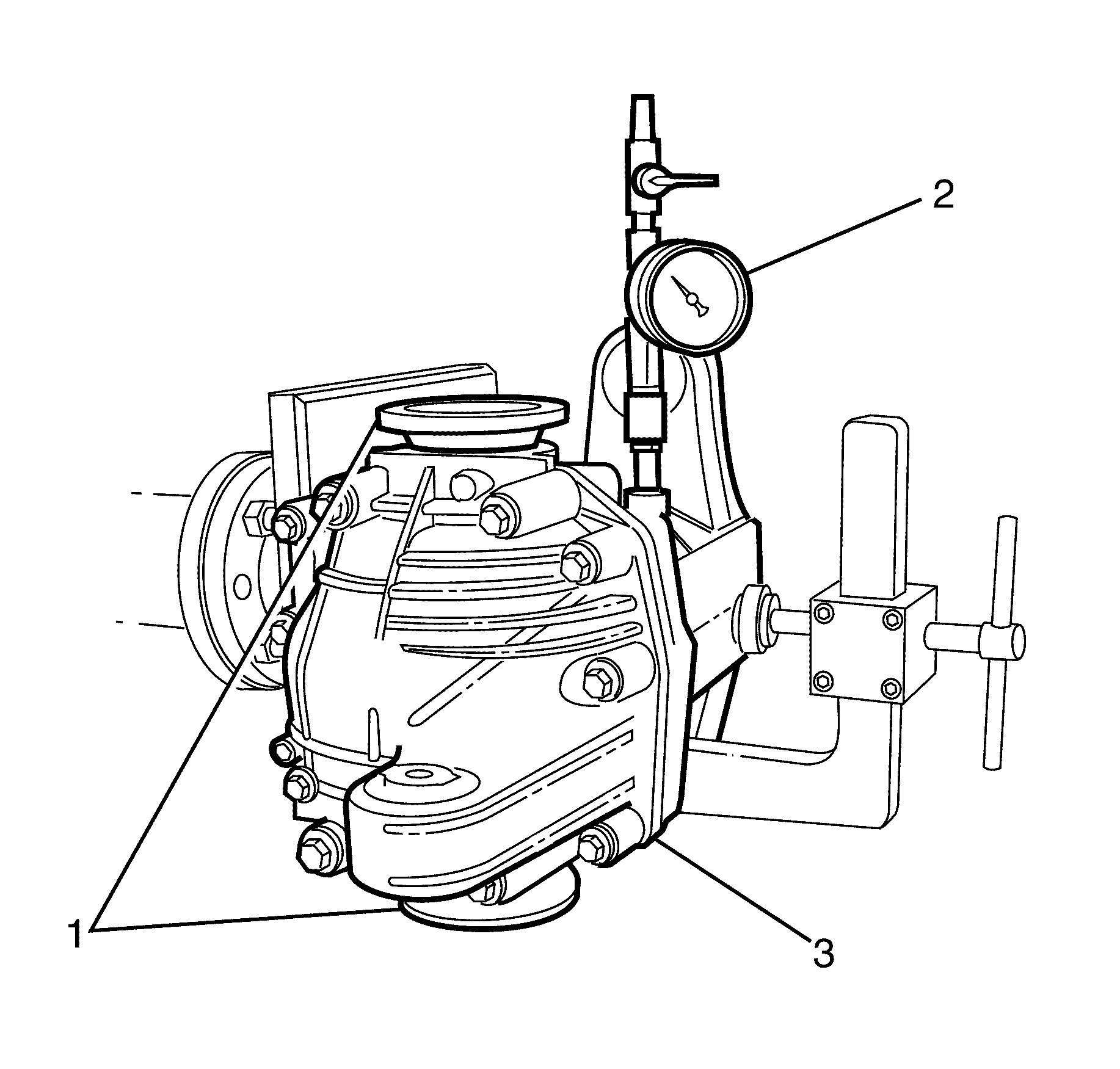
Note: Set the air pressure regulator to 0.4 bar before connecting.
